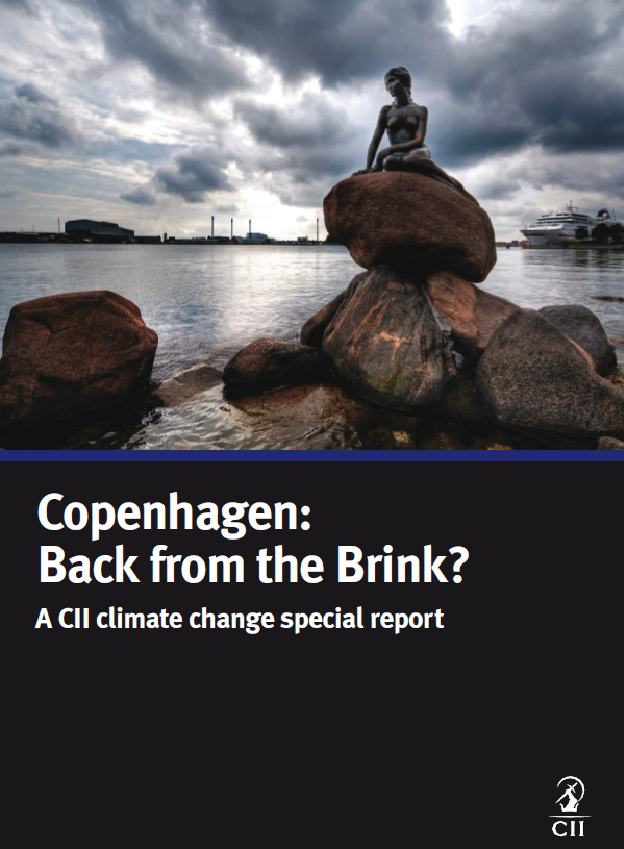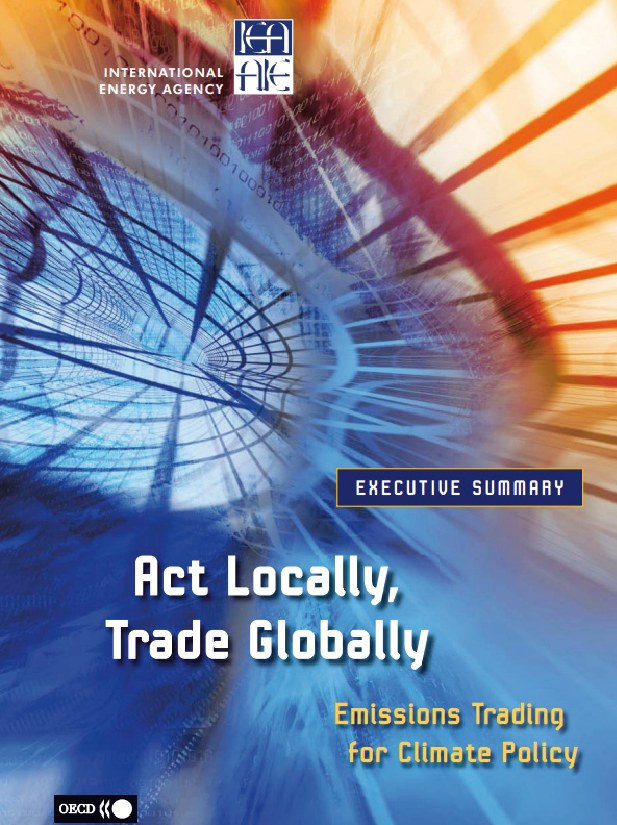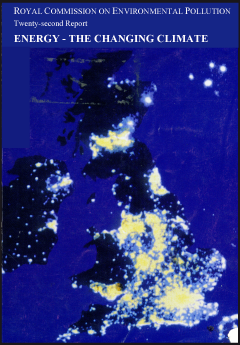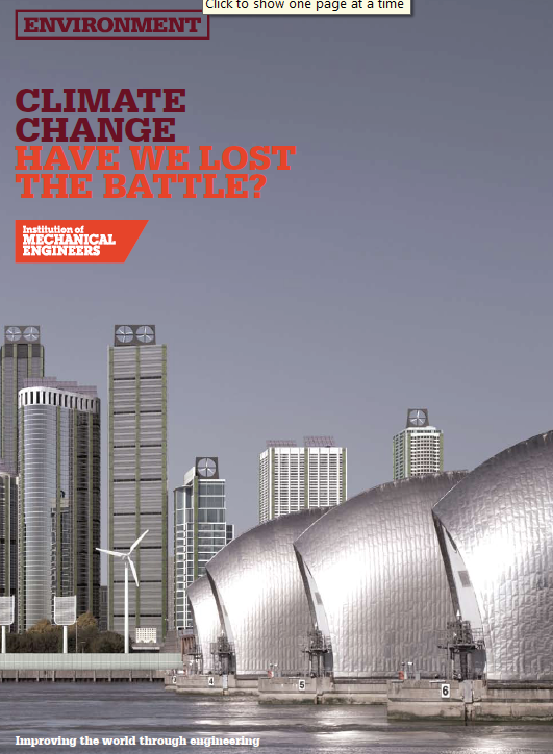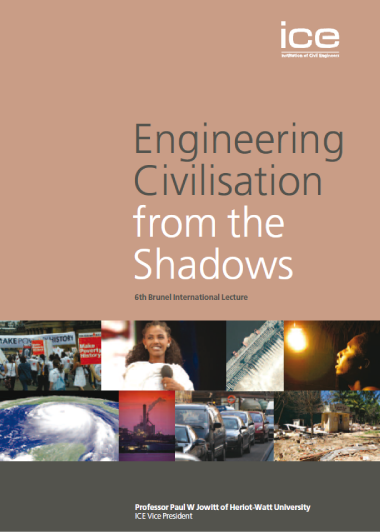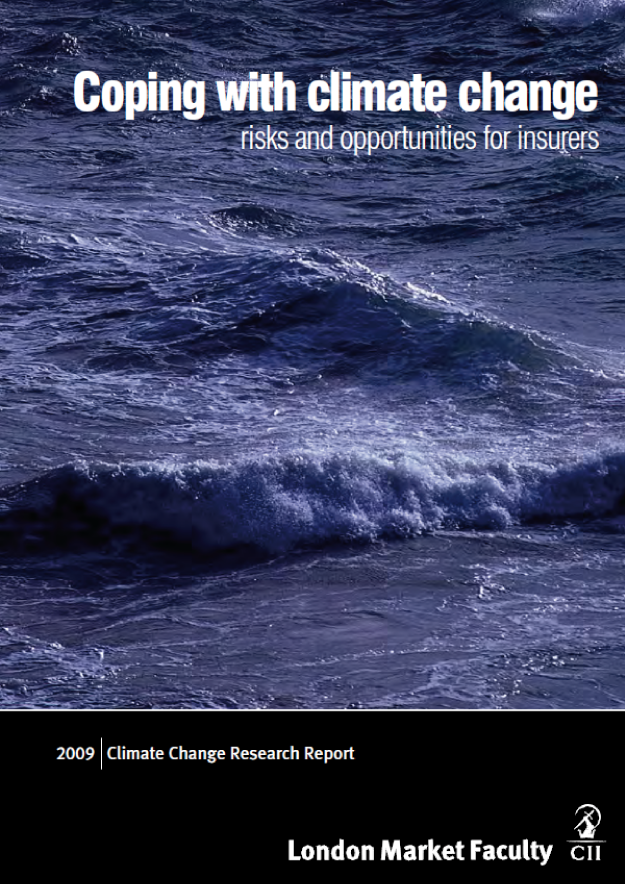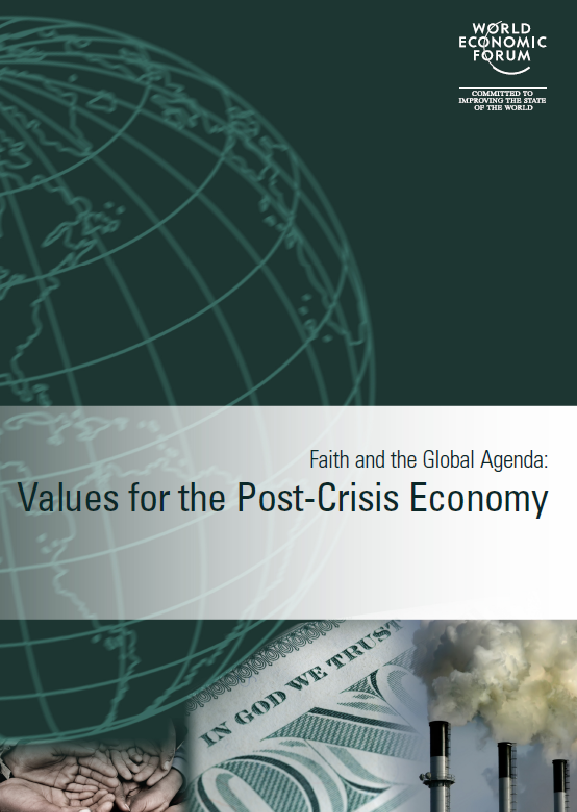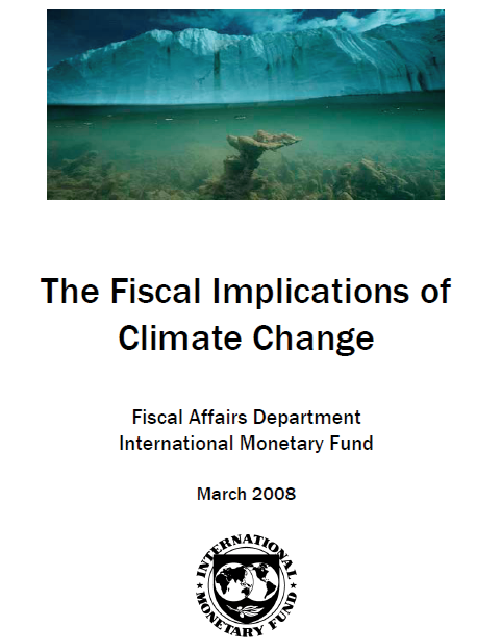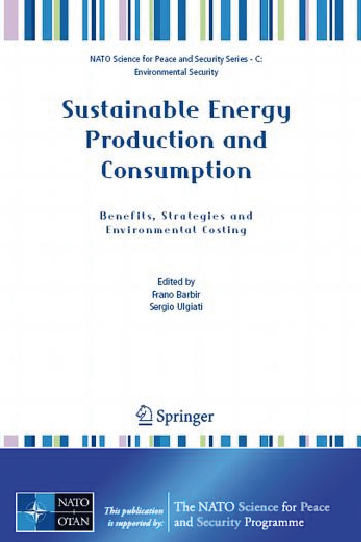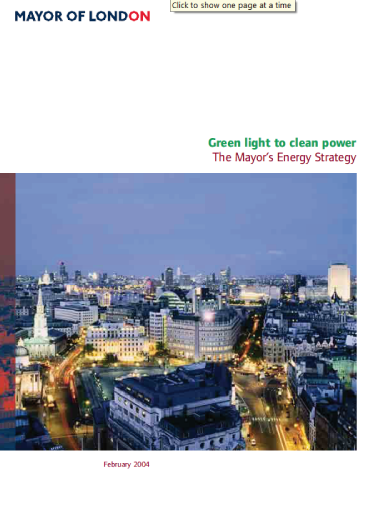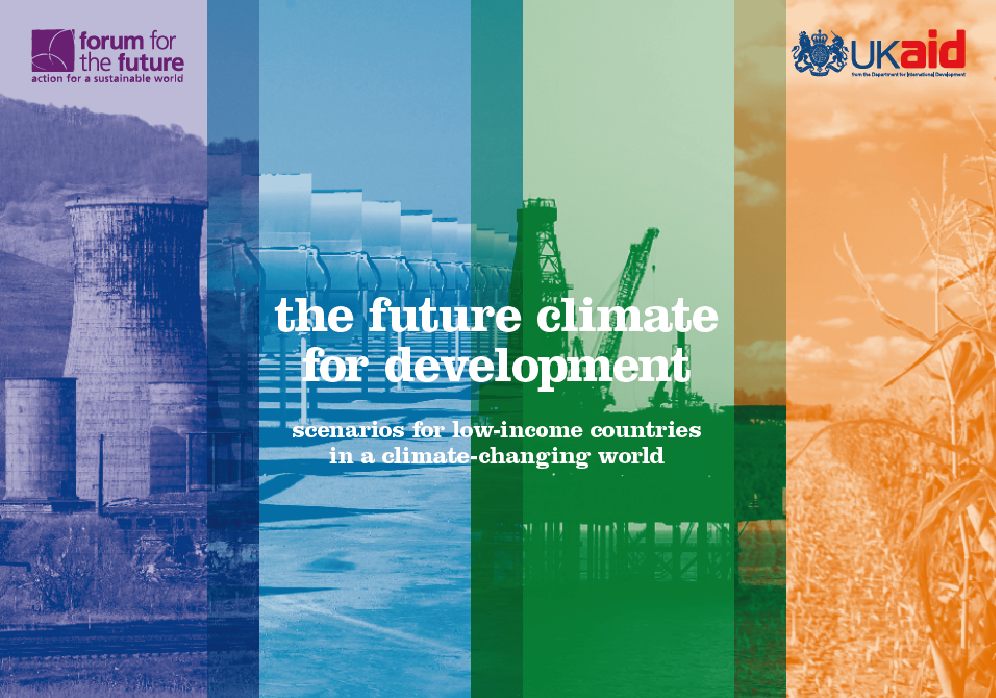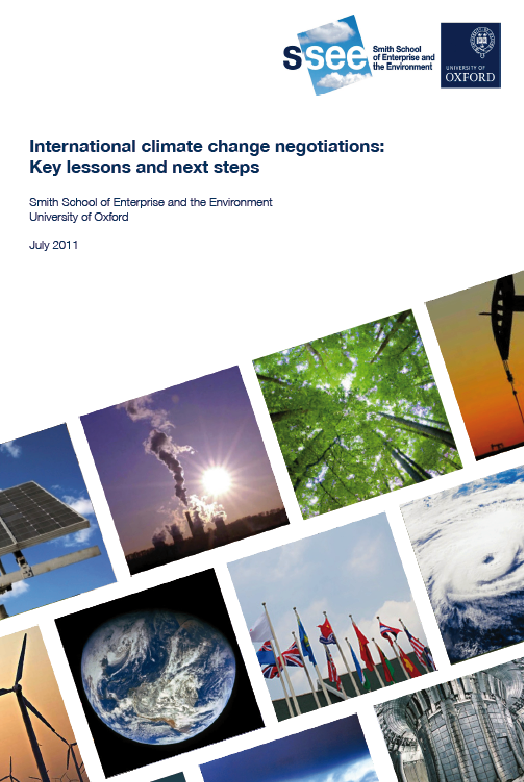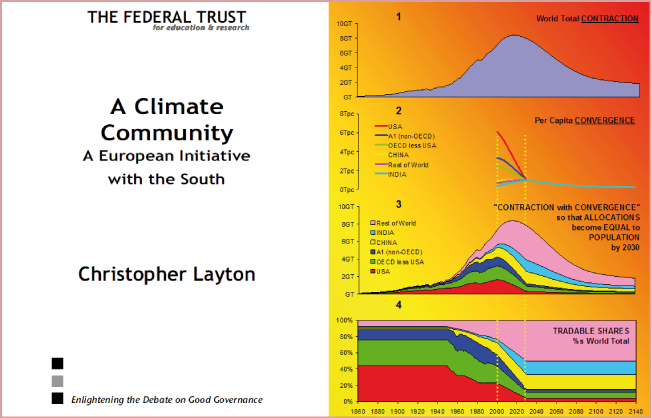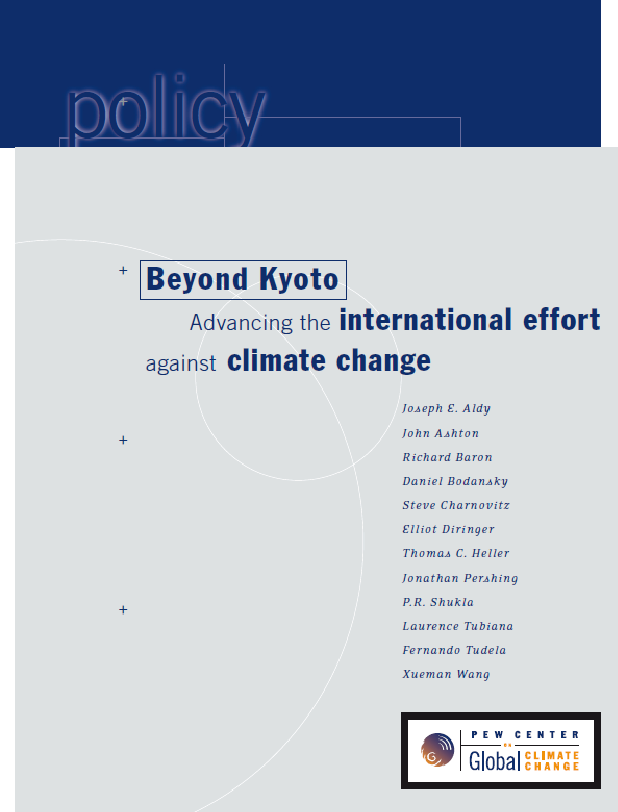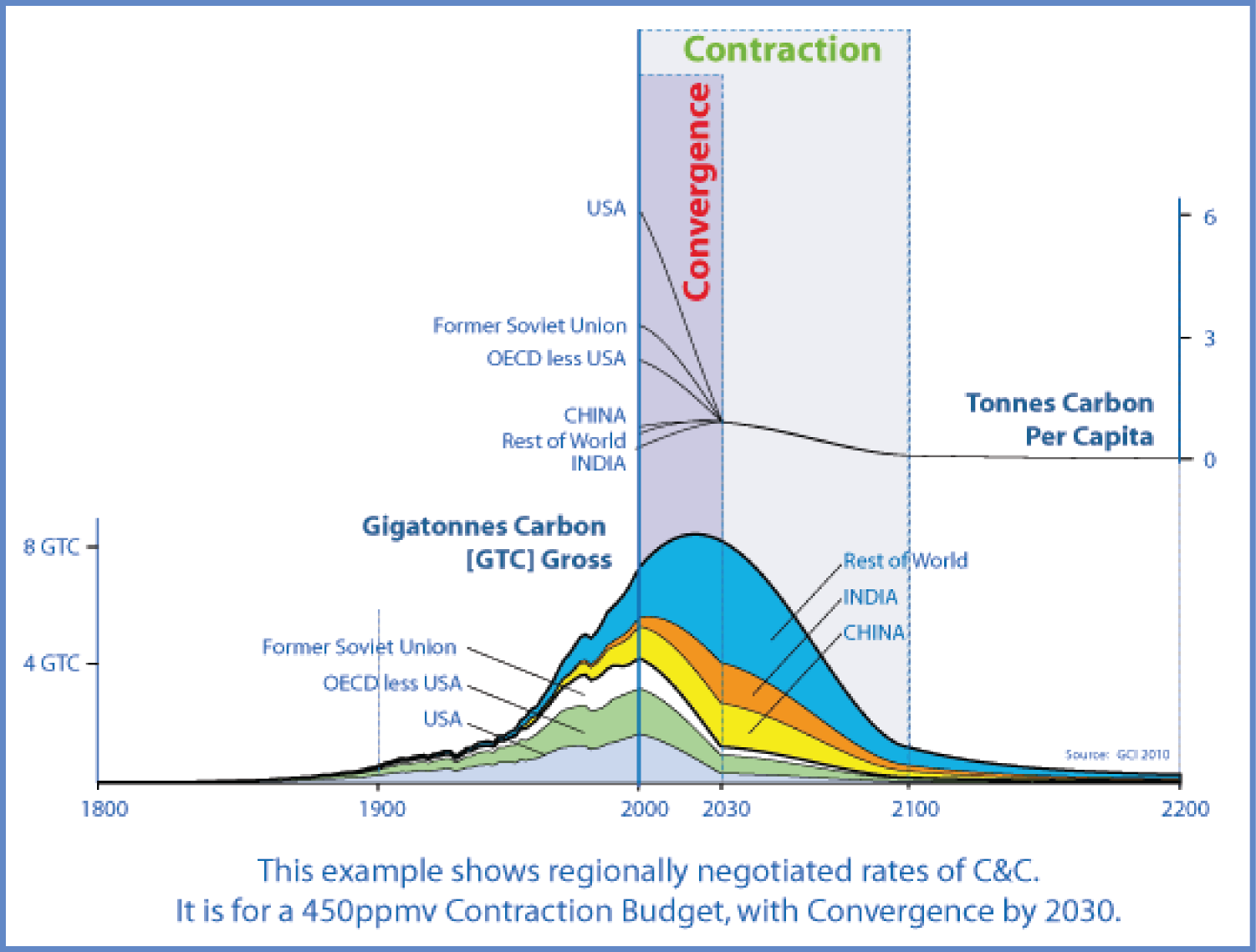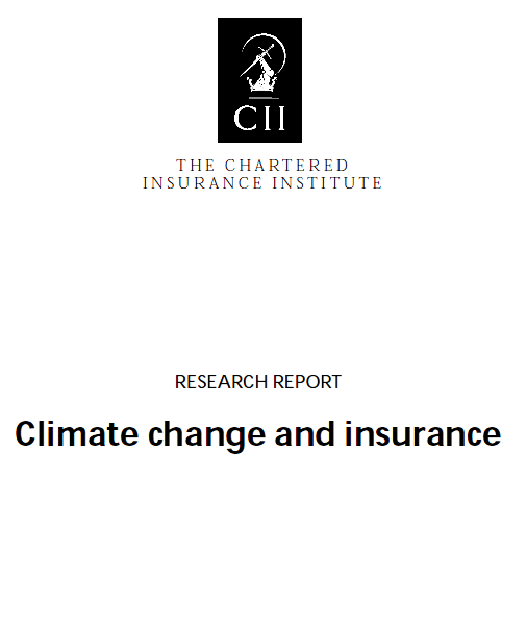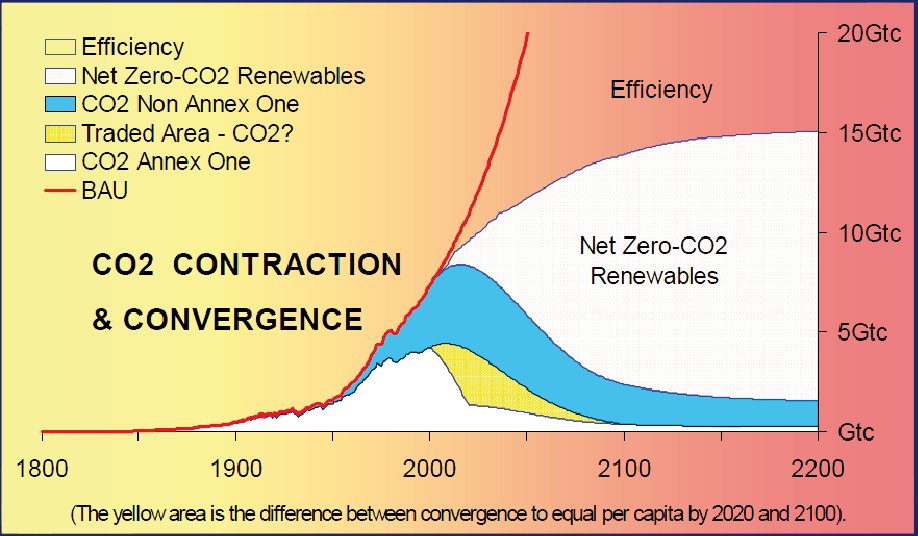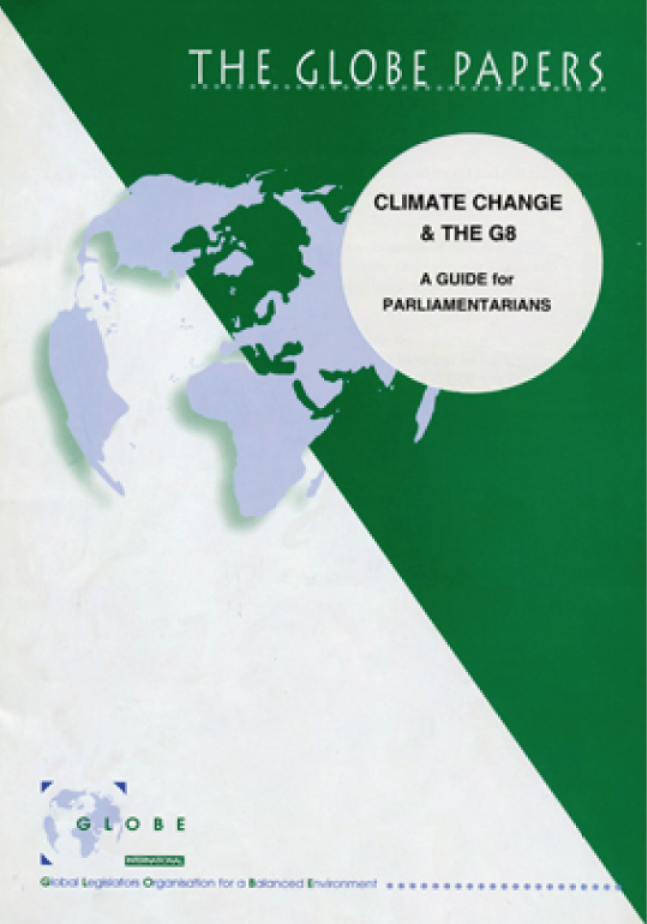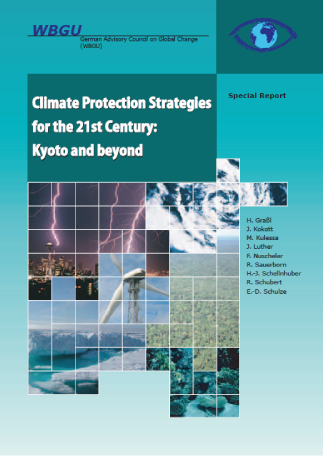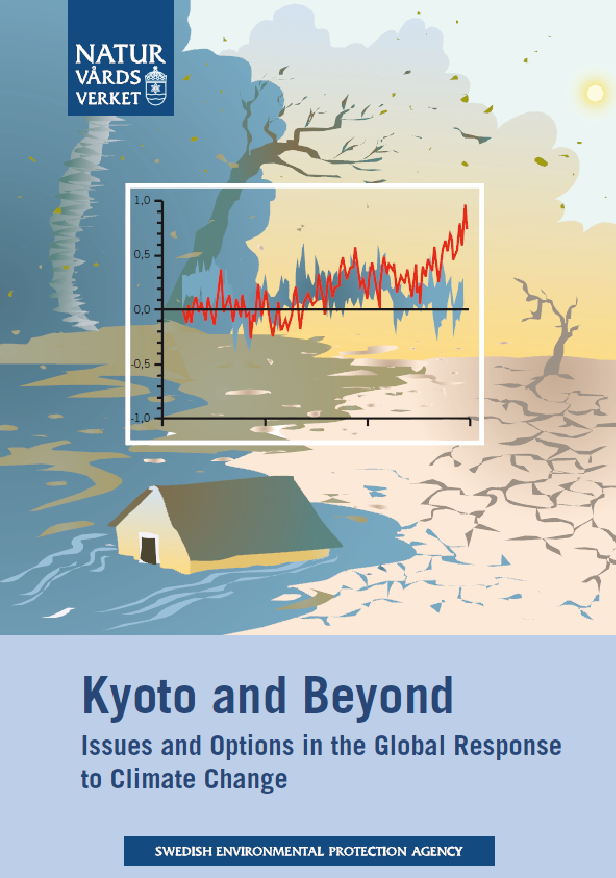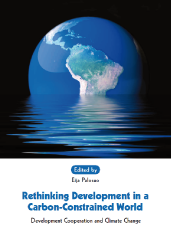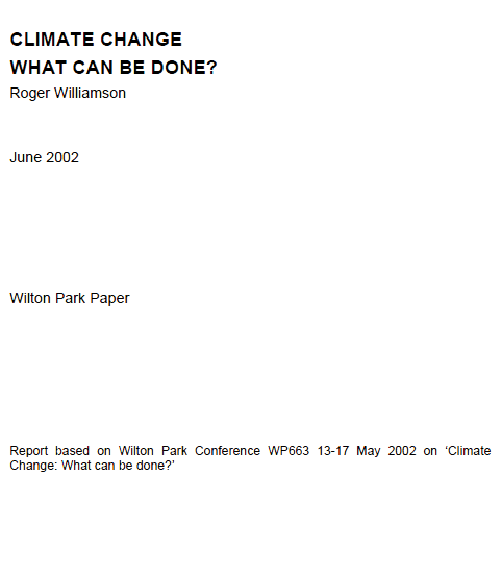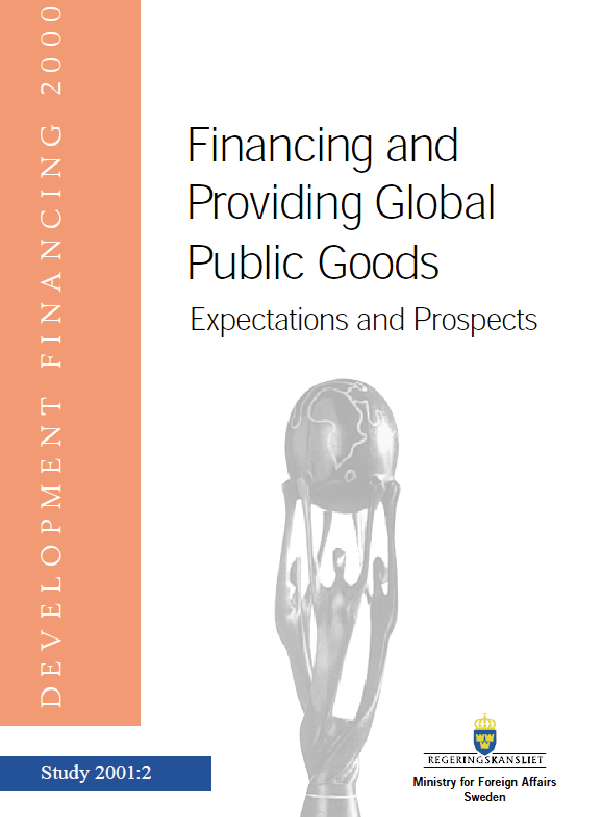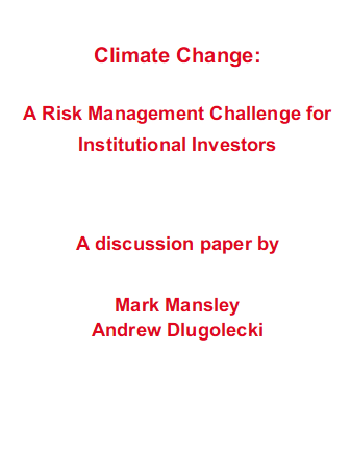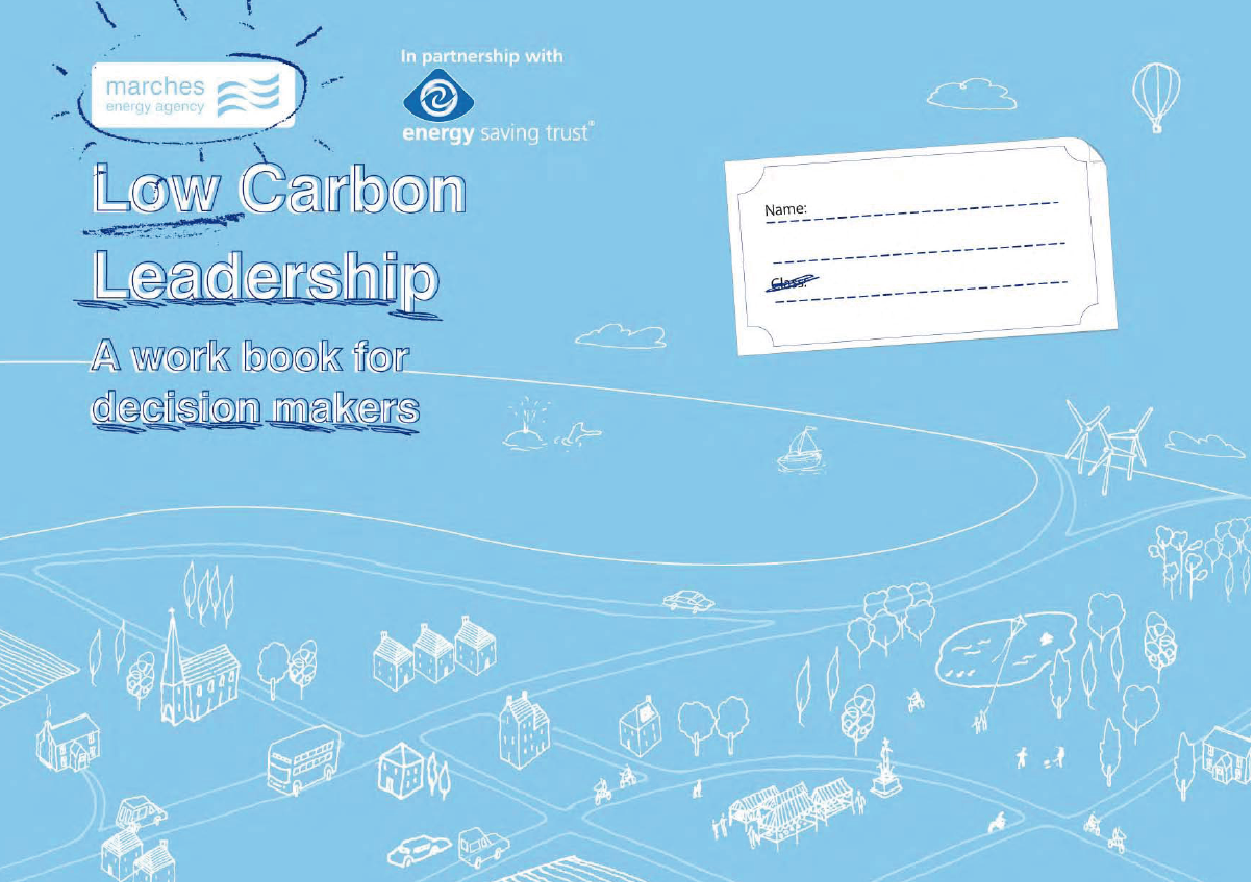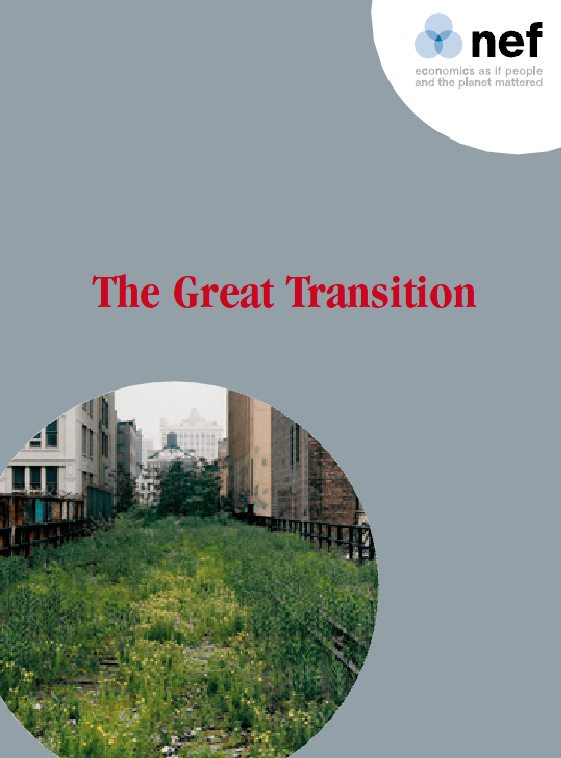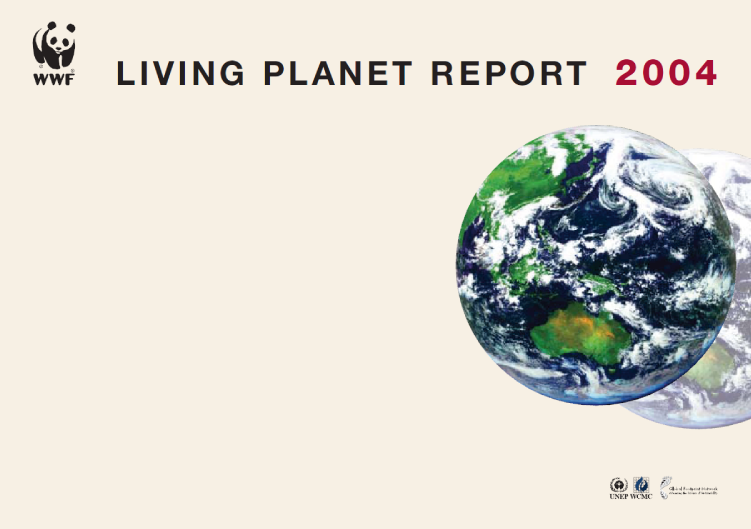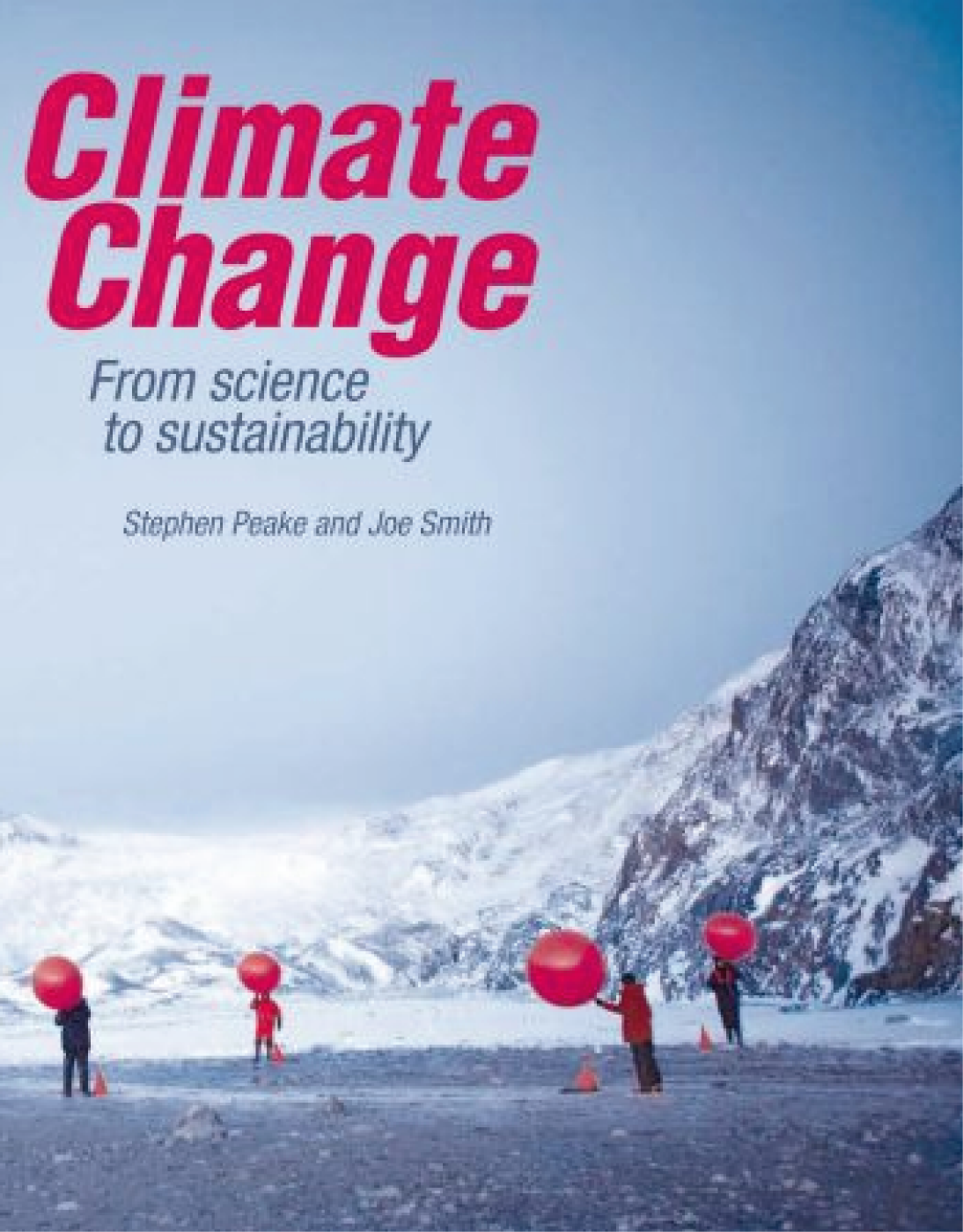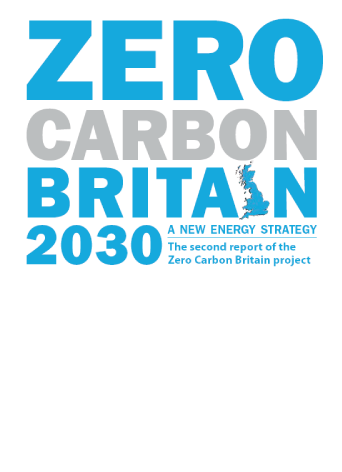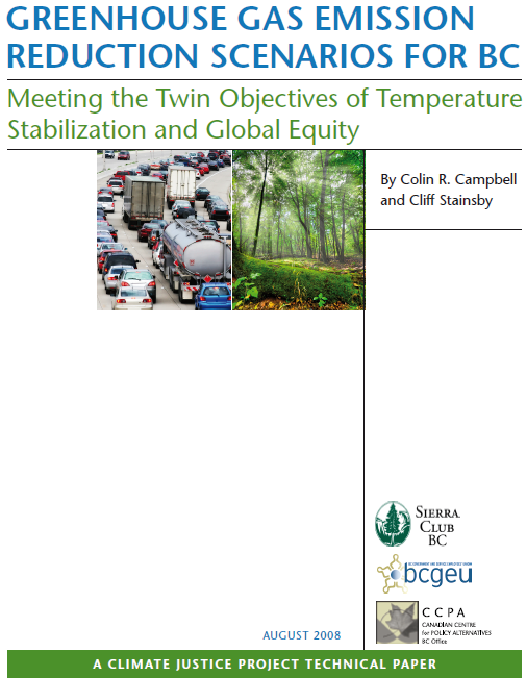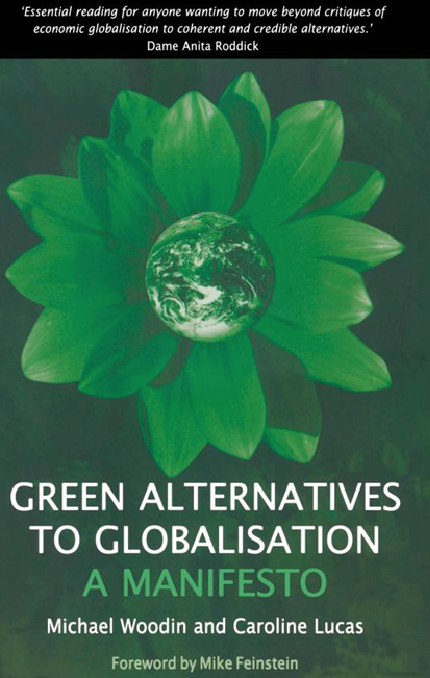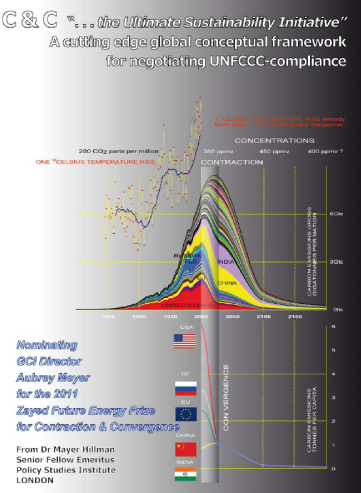Institutions Support for C&C
 Click logo to return to 'links-page'
Click logo to return to 'links-page'
An agreement on global policies to tackle climate change is urgently needed for many reasons. In the first place, evidence is accumulating that the climate system may be more sensitive than we believed even in the recent IPCC report. At the same time, there has not been much progress in putting a systematic halt to emissions, so the problem will get worse. The agreement needs to include credible, strong, phased targets for emissions leading to a global reduction of 50 per cent by 2050; otherwise the price of carbon will be too low to incentivise a change in mindset. The fairest way to share these is the Contraction and Convergence model, which leads to equal emissions percapita in every country."
The industry expert view
Dr. Andrew Dlugolecki, FCII, Research Fellow, Climatic Research Unit, University of East Anglia.
Author and editor, Intergovernmental Panel on Climate Change (IPCC)
Lobby policy makers at the international level through bodies like UNEP Financial Initiative for the adoption of a long-term political framework like Contraction and Convergence.
Weather Catastrophes and Climate Change - Is There Still Hope For Us
Gerhard Berz, Munich Re
Some proposals compensate the potential burden on developing nations with generous emissions allocation, whether as a simple strategy to obtain developing countries support for the regime or in a realisation of the global equity principle borrowed from social justice. A famous such proposal is Contraction and Convergencedeveloped by Aubrey Meyer.
Act Locally Trade Globally - Emissions Trading for Climate Policy
Organisation for Economic Cooperation and Development OECD & IEA
"The UK-based Global Commons Institute has taken the lead in promoting contraction and convergence, and has developed a computer model which specifies emission allocations under a range of scenarios. The concept has been supported by several national governments and legislators. Some developed nations are very wary of it because it implies drastic reductions in their emissions, but at least one minister in a European government has supported it. Commentators on climate diplomacy have identified contraction and convergence as a leading contender among the various proposals for allocating emission quotas to nations in the long term."
"Energy - The Changing Climate" [2000]
The Royal Commission on Environmental Pollution
The Government targets and budgets have been set using a top-down approach based on the principle of contraction and convergence. This approach involves emissions from industrialised nations reducing (contracting). At the same time, emissions from all nations converge to an overall target consistent with stabilising greenhouse gas concentrations within the atmosphere at an acceptable level. In this way, over time emissions will contract and converge to an equal share per person globally, regardless of the nation in which they live. The desire from most authorities is to constrain the global mean temperature rise to 2°C or below. This translates the contraction and convergence requirement to an 80% reduction target for the UK relative to 1990 levels by 2050 and the adopted budget profile through to 2020. The Institution of Mechanical Engineers supports the principle of contraction and convergence.
Climate Change - Have We Lost the Battle
Institution of Mechanical Engineers
The GGI International Contraction and Convergence Agreement has succesfully resulted in a reduction in emissions but carbon levels in the atmosphere are still rising and many commentators are worried that not enough has been done. Governments have been forced to respond with schemes such as the UK Carbon Entitlements programme which has been introduced to ration travel. The ice caps are shrinking and global weather patterns are unpredictable; environmentalists believe that the world ismoving into unknown territory.
Scenarios to 2055 - FORESIGHT Programme - June 2011
UK Government Office of Science and Technology"One approach to reducing GHG emissions is known as Contraction and Convergence. This involves emissions from industrialised nations reducing (contracting) and emissions from all nations converging to an overall target consistent with stabilising GHG concentrations in the atmosphere. Over time, emissions would contract and converge to an equal share per person. To achieve this equitable distribution, each of us in the UK would need to reduce our average annual carbon dioxide emissions from 10 tonnes to two tonnes. Contraction and Convergence is the science-based, global climate-policy framework, proposed to the United Nations since 1990 by the Global Commons Institute. It is supported by many climate change scientists and policy makers, including the Royal Commission on Environmental Pollution." See here & here
RIBA Climate Change Toolkit
Atmospheric CO2 levels are reaching critical levels and there must be a strategy to stabilise concentrations to a (relatively) safe level, and with the Kyoto process in limbo, some other process or protocol will be required to arrest the asymmetric pattern of Expansion and Divergence and which leads to a more equitable and less self-destructive use of the earth's resources.The Contraction and Convergence (C&C) Strategy proposed by the Global Commons Institute offers such a process, drawing widespread interest and support, for example from the Indian Government, the Africa Group of Nations40 and the USA. In December 1997 at the United Nations Framework Convention on Climate Change (UNFCCC) in Kyoto and shortly before they withdrew from the Kyoto negotiations the USA stated: Contraction and convergence contains elements for the next agreement that we may ultimately all seek to engage in.
The fundamental attraction of Contraction & Convergence to me is that it is logically based. It is not based on essentially market issues and arbitrary decisions about how many tons of CO2 permits are going to be allowed. It also doesn't have the risk in my view of one of the real issues with trading that some of the poorer nations and poorer peoples of the world will mortgage their future on a futures market of trading permits.
Prof Paul Jowitt - President ICE
The Global Commons Institute (GCI), founded in 1990 by musician Aubrey Meyer after the Second World Climate Conference, is an independent group concerned with the protection of the Global Commons.
GCI has contributed to the work of the UN Framework Convention on Climate Change (UN FCCC) and the Intergovernmental Panel on Climate Change (IPCC). www.gci.org.uk
"An equitable basis for allocation of future emissions will be important to obtaining the agreement of transition-economy and developing nations particularly China and India. Ideally the agreement could adopt Contraction and Convergence as the model for determining national emissions allocations."
"RICS Report" - C&C Statement
"Many scientists believe that an atmospheric level of 450 ppmv (parts per million by volume) of carbon dioxide should be the initial target for prudence; already we are at 380. For long-term allocation, the Contraction and Convergence model (C&C) seems appropriate. The name C&C reflects the facts that the annual emissions contract to a safe level, and the per capita shares converge to become equal. C&C has the advantages of simplicity and fairness, gives long-term confidence in emissions reduction and in the short-term can accommodate a variety of fixes as well as facilitating the flow of funds to developing countries."
"Coping with Climate Change"
CHARTERED INSTITUTE OF INSURERS - Dlugolecki on C&C
Along with Human Well-Being and Economic Decision-Making, we have to ask about green taxes that will check environmental irresponsibility and build up resources to address the ecological crises that menace us. The Contraction and Convergence proposals are among the best known and most structurally simple of these, and it would be a major step to hear some endorsement of them from a body such as this.
Faith and the Global Agenda: Values for the Post-Crisis Economy
World Economic Forum, DAVOS, Switzerland 2010
The Global Commons Institute has devised a greenhouse gas abatement proposal called Contraction and Convergence (Global Commons Institute 1997), in which the emphasis is placed not only on a significant contraction of anthropogenic CO2 emissions, but also on an equitable per capita distribution of the resulting global carbon budget. The latter implies a transition to a point (convergence) where future entitlements to emit will have become proportional to population. The uniform per capita allocation of emission rights reflects egalitarianism in the sense that all people have inherently an equal right to pollute. The egalitarian criterion per se has a strong philosophical appeal. However under contraction of the global carbon budget it is unlikely to be acceptable for industrialized countries with currently high per capita emissions unless the transition path allows for long-term smooth adjustment towards the terminal point.
Contraction and Convergence of Carbon Emissions: An Intertemporal Multi-Region CGE Analysis, Journal of Policy Modeling; The Fiscal Implication of Climate Change
International Monetary Fund
Contraction and Convergence model provides one transparent solution with equal per capita emissions for the mitigation of COs emissions The model requires considerable emissions reductions which, according to our study, seem to be possible when the changes arc analyzed from the point of view of emissions intensity development. According to the Fourth Assessment Report of the IPCC a considerable reduction of greenhouse gas (GHG) emissions is required in order to prevent dangerous anthropogenic interference with the climate system. Various different approaches have been proposed to allocate commitments regarding the future greenhouse gas emission mitigation for different countries. One of them is the Contraction and Convergence (C&C) model of future GHG emissions (GCI. 2003). The C&C approach defines emission permits on the basis of converging national GHG emission rates to an equal level which is based on per capita emissions under a contracting global emission profile. In this study we have used a target of 1.8 tons of CO2 per capita. which should be achieved by all countries by a designated year, 2040. This satisfies the requirement set by IPCC to reduce the total emissions by 50 to 85% from the 2000 level in order to limit the global temperature increase to 2-2.4°C. The purpose of this paper is to analyze what the C&C approach might mean for the examined countries and to analyze the potential changes that are needed in the emission intensities of the selected countries in order to achieve their C&C targets. For further information on the data and methodology used in this study please see GCI (1998, 2003). (IEA (2003 a. b. e) and (UN 2003) for data sources and Luukkanen et al. (2005) for methodology.
Sustainable Energy Production and Consumption - Frano Barbir Sergio Uliati
NATO Science for Peace and Security Programme
"It seems that this direction was given by the U.S. withdrawal from the Kyoto Protocol in 2001, which led to diversification of negotiation fora, other than those conducted under UN auspices. Moreover, the principle of Kyoto to reduce emissions of greenhouse gases, caused by the Zeitgeist vision Uli 1990s is no longer sufficient to meet the new challenges facing the planet. Poor legacy, namely the massive pollution of the past and now its persistence requires joint action of several international fora, which can be called the "contraction and convergence approach". Here is one of the reasons that explain this diversification: "[...] the environment and consequences of climate change are challenges whose impact policy and pressure beyond the scope of the Convention on Climate Change United Nations adopted in 1992 in Rio de Janeiro".
Rumanian Journal of International Relations and Security Studies
Contraction and convergence
Contraction and convergence is a simple approach to distributing the total greenhouse gas emission reductions required internationally, between various countries or groups of countries. The approach is based on two principles: 1 there is an upper limit to acceptable global atmospheric greenhouse gas concentration, beyond which the damage from climate change would not be acceptable 2 the atmosphere is a global commons, so that as individuals we all have equal rights to emit greenhouse gases. Contraction and convergence is arguably the most widely supported, equitable, global approach to tackling climate change and the Mayor supports the principle of contraction and convergence. The contraction and convergence proposal was developed by the Global Commons Institute, London.
Details of its origins, methodology, and support are available online
Green light to clean power
The Mayor�s Energy Strategy
The concept of Contraction and Convergence is a long-term framework towards the ultimate object of climate change policy in terms of 'safe' emissions levels. The concept has gained some interest amongst politicians and climate change experts and is seen as potentially superseding the arbitrary short-term target setting of the current Kyoto Protocol process. Under a Contraction and Convergence regime an international agreement would define to what level atmospheric greenhouse gas concentrations could rise before becoming unacceptable. Once this is defined, an estimate would be made of how much reduction in global greenhouse gas emissions is required to meet the target, taking into account the effect of sinks, and how quickly the target should be reached. This represents the 'contraction' element, and in itself it does not differ substantially from the aims of the UNFCCC to stabilize "greenhouse gas concentrations in the atmosphere at a level that would prevent dangerous anthropogenic interference with the climate system."The key differentiating factor of Contraction and Convergence is the proposal that ultimately the 'right' to emit carbon dioxide is a human right which should be shared equally. Therefore, emissions targets should ultimately be allocated to countries on the basis of their populations. Emissions rights would be on a per capita basis and therefore require convergence from the present very unequal per capita levels to a universal per capita level.During the convergence period, which should not be protracted, emission permits would be progressively adjusted from status quo to these new levels. Permits could be traded, and this would cause a major economic transfer from countries that have used fossil fuels to create wealth to those still struggling to alleviate poverty. After convergence, each country would receive the same allocation of carbon dioxide emission rights per head of population and further trading in permits is envisaged.
Policy Responses to Climate Change
World Nuclear Association
Climate change and the 2026 Istanbul Treaty dominate global politics. Despite a succession of treaties designed to reduce emissions, the Eighth IPCC Assessment Report in 2025 showed that the world is still on a high emissions pathway. This has come about for two reasons. Firstly and most importantly, developed countries have failed to hit their own targets, relying on technologies such as nuclear power that were very slow to come on stream. Politicians talk of near-misses of targets, but many near-misses add up and the world is a long way from hitting global targets on reducing greenhouse gases (GHG). Secondly, many low-income countries were excluded from early agreements, and their emissions have grown as their economies developed (often through investment from the developed world). The emissions of low-income countries are now significant enough that their cooperation is needed in order to meet global GHG reduction targets. Many of these countries have joined together to create a united front against the highincome countries, which they blame for causing climate change, using the language of climate colonialism. Some have even withheld vital resources (such as agricultural commodities) to secure commitments from high-income countries. They argue that their economies are still too fragile for carbon reductions, and that they have a right to emissions in order to grow. High and middle-income countries made many concessions to get low-income countries on board in a series of tense, urgent negotiations in the run-up to the 2026 Istanbul Treaty. They have removed trade barriers and farming subsidies, and signed up to an equitable deal based on contraction and convergence at a level of 0.7 tonnes of CO2e per capita by 2060. The deal also aims to remove GHG from the atmosphere using Greenhouse scrubber technology. Some in low-income countries view the deal optimistically and argue that climate change politics might finally bring development gains. Others worry that it is far too late, and that much of sub-Saharan Africa is doomed by extreme temperature rise. Under the Istanbul Treaty, carbon default (failing to meet commitments on carbon emissions targets) is treated as seriously as failure to comply with a Security Council resolution. Non-signatories are threatened with sanctions and even military intervention.
The Future Climate for Development
DFID Forum for the Future
"The One Planet initiative adopts the principle of Contraction and Convergence which means that countries with high per capita emissions will have to reduce their emissions much more rapidly than countries that currently have low per capita emissions. The end result being that per capita emissions from each country will converge at a more equitable level and the global total of emissions will contract. BioRegional will work with partners to agree community specific trajectories. For example, for communities in developing countries a suitable trajectory will have to take into account whether the development is targeted at residents with high impact lifestyles or very low income residents with low carbon emissions."
Common International Targets January 2011
ONE PLANET COMMUNITIES
Here we present a proposal based on the contraction and convergence principle as proposed by the Global Commons Institute in the early 1990s. This principle describes a trajectory whereby the overall emission level is reduced over time whilst the per capita emissions rates of different countries converge on a low value aimed at meeting the 2°C objective. This allows developing countries to maintain some emissions growth in the intermediate phase, which is made up for by a decrease in developed country emissions. The overall amount emitted should not be more than will cumulatively push temperature increases over 2°C. In the global cap and trade system we propose here, emissions are traded based on a per capita allocation of CO2 trading permits at some future date (2050 is favoured by many).
International climate change negotiations: Key lessons and next steps
Smith School of Enterprise and the Environment University of Oxford July 2011
"This concept, known as Contraction and Convergence, is familiar enough to cognoscenti of global climate negotiations. It was developed by Aubrey Meyer of the Global Commons Institute and expanded in a recent book.10 It has been adopted as a policy goal by the major developing regions - India, China and much of Africa - and approved by a resolution of the European Parliament.11 It has been urged by the Royal Commission on Environmental Pollution.12 In March 2001 the Chartered Insurance Institute in a research report13 on the grim effects of climate change bluntly told Government and industry stakeholders to show some leadership by coming out in support of the principle of Contraction and Convergence."
A European Initiative with the South Federal Trust
The Contraction and Convergence proposal, developed by Aubrey Meyer, assigns every human being an equal entitlement to GHG emissions. All countries should thus move towards the same per capita emissions. Total emissions should contract over time, and per capita emissions should converge on a single figure. The actual convergence value, the path towards convergence, and the time when it is to be reached would all be negotiable. The proposal allows for the trading of emissions entitlements using mechanisms of the kind permitted under the Kyoto Protocol. At one level, this is compelling. It offers a long-term architecture for an international emissions regime, potentially robust across several of the equity dimensions identified in this paper. It would not require developing countries to shift their immediate focus away from their basic needs: their emissions constraints would bite gradually as per capita emissions increased. And by emphasizing entitlements as well as commitments, it could help address the sense of inequity that arises from the unrequited carbon debt of past emissions by industrialized countries. Ultimately, almost any conceivable long-term solution to the climate problem will embody, at least in crude form, a high degree of contraction and convergence. Atmospheric concentrations of GHGs cannot stabilize unless total emissions contract; and emissions cannot contract unless per capita emissions converge. The practical question is not whether this is a reasonable scheme, but whether the quickest way to realize it is to base the next stage of the negotiations explicitly on it. The contraction and convergence proposal plays an important role in the climate process. It focuses attention on the ethical questions at the heart of the climate problem, which no long-term solution can afford to ignore. If supported by a critical mass of countries, it would become an important force in the negotiation. The ideas behind the proposal will remain relevant to any discussion of climate and equity for as long as the search continues for a global response to climate change.
Beyond Kyoto PEW Centre
Following the inconclusive end to the Bonn talks a group of climate scientists and campaigners wrote to energy and climate change secretary Chris Huhne, calling on him to stand by the Liberal Democrat manifesto pledge to push for an ambitious international climate treaty based on the contraction and convergence emission reduction model. The letter calls on Huhne to convene a high-level public meeting to discuss the failure of UN climate negotiations and the extent to which a contraction and convergence model, whereby emission targets are based on an assumption that everyone is entitled to the same level of per capita emissions, could break the current deadlock between developed and developing economies on emission caps. Few could argue against a model of reducing overall emissions while also equalizing emissions between developed and developing nations, which is the principle of contraction and convergence, but this is an ideology that is seemingly almost impossible to implement at the current time.
ENGAGE - What Happens after Kyoto
Mindfulness.
A proposed strategy for counteracting human activity in the biosphere as a comprehensive approach is called the Contraction and Convergence model. It sets up the framework whereby all countries accept a carbon budget that shrinks rapidly during the convergence phase between 2000 and 2030, resulting in a diminishment of carbon emissions to the levels seen in 1900 within 200 years. Will this be sufficient to preserve the planetary systems as we know them today? We may have a difficult time maintaining human life, not to mention the rest of the life systems that give us sustenance.
Mindfulness is concentration on the nature of life and all its parts. This way of seeing can allow us to act in effective ways that return our world to its natural balance and respect for life, rather than mindlessly burning resources into destruction. The science says that, and the experiential says that. Even simple logic says that.
So what are we waiting for?
Civitas on Contraction and Convergence
An option is to consider per capita distribution. Each country is then allocated emissions entitlements in accordance with the number of people living there. This principle also makes it possible to allocate quotas among countries in the future the contraction and convergence principle. The proposal originated from the Global Commons Institute, but research communities have also shown interest. The goal of contraction and convergence is to gradually decrease global emissions, while simultaneously evening out the differences in the total emissions of each country. The time perspective is long-term, and at a given point in the future the aim is that all people will have the same emissions entitlements.
It is time to settle the bill after many years of high CO2 emissions.
But who should pay? Anne Therese Gullberg CICERO
The Society's Board unanimously agreed that the Contraction and Convergence framework provides an important step forward in helping all sectors of community, business and government to understand how we can move forward together, on a global scale, to tackle climate change. John Brady, Chair of the Society welcomed this approach and said, On behalf of the Society for the Environment I am proud to endorse the Contraction and Convergence framework which will be important in helping us to work towards a sustainable and equitable future, not just for the UK but communities and economies worldwide.
Society for the Environment
1. Arboricultural Association (AA)
2. Chartered Institute of Building (CIOB)
3. Chartered Institution of Wastes Management (CIWM)
4. Chartered Institution of Water and Environmental Management (CIWEM)
5. Institute of Agricultural Management (IAgrM)
6. Institute of Ecology and Environmental Management (IEEM)
7. Institute of Environmental Management and Assessment (IEMA)
8. Institute of Fisheries Management (IFM)
9. Institute of Professional Soil Scientists (IPSS) (associate member)
10. Institution of Agricultural Engineers (IAgrE)
11. Institution of Chemical Engineers (IChemE)
12. Institution of Civil Engineers (ICE)
13. Institution of Environmental Sciences (IES)
14. Institution of Water Officers (IWO)
15. Landscape Institute (LI)
16. Royal Institution of Chartered Surveyors (RICS)
17. Royal Meteorological Society (RMetS)
Contraction & convergence
The most realistic way to bring about the required reduction in ghg emissions (which will have the
combined effect of reducing the damage imposed on the insurance industry and encouraging the transition to renewable energy) is that proposed in the concept of Contraction and Convergence (C&C). This concept was created by the Global Commons Institute (GCI) and is incredibly simple in its detail. Essentially, everyone has the right to emit an equal amount of pollution (in this case CO2) to the Global Commons (atmosphere). At present society emits six billion tonnes of carbon a year (6Gtc) to the atmosphere. Coincidentally there are six billion people alive today hence everyone should be entitled an equal right to emit 1 tonne/yr. To achieve the required global reduction in ghg emissions an agreed target of say 2Gtc by 2040 could be set and the system allowed to contract to that global budget by converging on an agreed per capita allowance. Those states that need to emit more than their share will have to buy emission entitlements from those that have an excess. This would operate in much the same way as the envisaged emissions trading scheme to be set up within the Kyoto Protocol.
Figure 10.9 - The red line shows Business as usual CO2 emissions (BAU). The solid segments show Contraction, Convergence, Allocation and Trade to manage emissions down by at least 60% within a given time frame and contraction budget. The renewables opportunity is worth trillions of dollars the biggest market in history. Annex One is the developed World. Gtc: trillions of tonnes of carbon equivalent.
Figure 10.9 illustrates this process, showing that by the year 2100 emissions will have fallen to well below today's levels, and will emanate from what are, today, developing countries. Since economic progress is dependent on energy, the shortfall from Business as usual energy consumption will need to be met from two directions: efficiency gains, and a rapid growth in renewable energy sources. It is clear from this that emissions trading can only be an intermediate stage, since the total volume of emissions must fall. The only blockage to this simple system is the absence of political will to step outside the box instead of conducting a tortuous round of negotiations of the Kyoto Protocol. One way to unblock this impasse is to amass a large enough consensus of stakeholders behind the concept of contraction and convergence, persuading governments to supersede the Kyoto Protocol. The insurance industry is an obvious place to start such a campaign as it has so much to lose and so much to gain. If society continues down the fossil/Kyoto route, future economic losses are likely to become unsustainable: the current rate of increase in damage from natural hazards is 12% pa and the rate is accelerating. Given that the global sum of such losses was $100bn in 1999 (Munich Re, 2000), it would outstrip global GDP (growing at 3% pa) by 2065, if the trends persist. If the insurance industry rallies behind C&C, it not only reduces that risk, but it is well placed to invest in the future renewables market. In fact one could argue that as the insurance companies own the oil companies (through equity ownership), insurers form the only industry that has the collateral and the need to adopt the C&C logic. The desired sequence of events is shown in Figure 10.10.
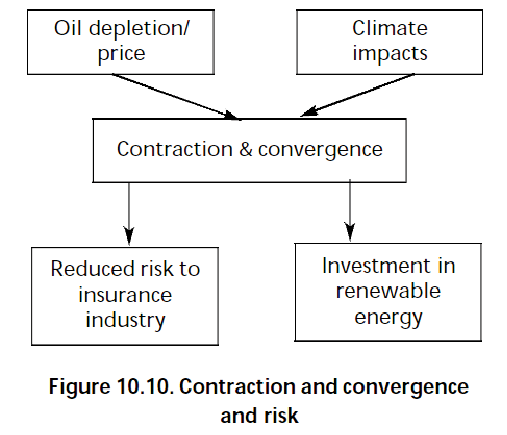
Climate Change and Insurance
Chartered Institute of Insurers
Such aims must be reached through an equitable global climate regime that continues the efforts of the Kyoto Protocol under the umbrella of the United Nations Framework Convention on Climate Change (UNFCCC). At the heart of this regime could be a cap-and-trade philosophy, which stems from the concept of climate justice and has been termed contraction and convergence. The idea is to put a cap on total global emissions and continually reduce the global cap over the years (until 2050, for example) until the cap level is reduced to a targeted sustainable threshold. This means that global greenhouse gas emissions from industrial production and consumption to land, sea and air traffic would decrease substantially over the long term (contraction). Emission allocation would start from the status quo and gradually reach an equal per-capita basis (convergence). In practical terms, this means that the per-capita emissions of industrialized countries, which are comparatively much higher at present, will be decreased significantly, while most developing countries may initially increase their per-capita emissions.
Fritjof Finkbeiner International Chairman Global Marshall Plan Initiative, Member of the Club of Rome, James B Quilligan Coordinator Global Marshall Plan, Initiative USA, Centre for Global Negotiations/Bran 21 Forum
"GLOBE International adopted the "Contraction and Convergence" analysis in May 1977. Since then, I and my colleagues have campaigned for its acceptance. This pamphlet is a record of those efforts and provides a short summary of the work of the Global Commons Institute (GCI) in this field. I would like to pay tribute to all the GLOBE parliamentarians who have fought so hard for this cause and particularly to the work of Aubrey Meyer and the GCI team on whose brilliant analysis the campaign is based. "Contraction and Convergence" is the only practical and convincing way forward for the world. It is vital that the 08 leaders recognize this and commit themselves to negotiating ahead of COP4 the global solution for what everyone accepts is the global problem."
Globe International
Climate Change & the G8
"The WBGU recommends that emission rights for the green-house gases covered by the Kyoto Protocol be allocated according to the contraction and convergence [C&C] approach. The C&C model (Meyer, 2000) is based upon a fundamentally equal right of all individuals to emit. This can be derived from the human right to equal treatment, and corresponds to the principle of equity under the UNFCCC (Art. 3(1)), and thus corresponds to the egalitarian principle postulated by the Council."
"Climate Protection Strategies"
WBGU on C&C
Equalising Per Capita Emissions
A good starting point in the search for equitable solutions is the proposal to equalise per capita emissions at some point in time, meaning in effect, to assign everyone the same property rights to the atmosphere. Equalising or converging per capita emissions is the stated objective of the Contraction and Convergence proposal developed by the Global Commons Institute (see Box 6) and has been further encapsulated in several proposals put forward in the negotiating process. Argawal and Narain (1991) take this method a step further to recommend the use of per capita net emissions that is emissions that exceed the per capita absorptive capacity of global carbon sinks. As noted earlier in fi gure 10, the disparities in per capita emissions between developed and developing countries are huge. Developing countries have generally promoted discussion of per capita emissions because it highlights these disparities in emissions and the associated individual lifestyles. There is clearly a strong equity argument in favour of the concept of using per capita emissions as the basis for defi ning commitments.
Kyoto and Beyond - Issues and Options in the Global Response to Climate Change
Swedish Environmental Protection Agency
Contraction and convergence
"In order to picture which development paths might bring the world to a greater level of resource justice, it may be useful to employ the model of contraction and convergence (Meyer 2000). This model schematically envisages two different development paths: one for industrial countries, one for developing countries. All nations of the world would adjust their use of resources so that in half a century from now they no longer overstretch the absorption and regeneration capacity of the biosphere. The model assumes no nation has the right to a disproportionate share of the global environment, so each one endeavours though with individual variations to achieve the common goal of material and energy consumption compatible with the demands of other countries, while remaining within the carrying capacity of the biosphere.
In the end, there is no justification for any other distribution of globally important resources; the right of all nations to self-defined, self-determined and equal development permits it only to make claims that are socially and ecologically sustainable at a global level. This is what the contraction and convergence argument inspired by Kant comes down to: institutional patterns of resource consumption should be considered unjust if they rest upon rules which cannot in principle be adopted by all other nations. Consequently, the model requires that the industrial countries contract that is, that they reduce their consumption of resources drastically. Resource justice in the world crucially depends on whether the industrial countries are capable of retreating from overconsumption of the global environment.The example of greenhouses gases may serve to illustrate the path of shrinking resource consumption. By the middle of the century, the overconsumers must reduce by 80% to 90% the strain they put on the atmosphere by burning fossil fuels, in order to do justice to the precepts of both ecology and fairness. It goes without saying that this figure refers to the global North, i.e. the consumer class in the countries of the South is placed under the same responsibility. On the other hand, developing countries appear in the model as tracing an upward curve in resource consumption. First, poorer countries have an unquestionable right to attain at least a dignity line of resource consumption which should apply to all citizens of the world. Without access to kerosene or biogas, without an energy and transport infrastructure, it is hard to satisfy even the basic needs of modern human life.
Moreover, each country will try to achieve different images and forms of a prosperous society an ambition that in turn requires access to resources such as energy, materials and land. However, this upward movement ends at an upper line of ecological sustainability for all; natural limits set the framework for justice. As it happens, a number of emerging economies are already about to hit that limit in the coming decade.
The conceptual model of contraction and convergence thus combines ecology and justice. It begins with the insight that environmental space is finite, and it ends with a fair sharing of the environment by the citizens of the world."
Rethinking Development in a Carbon-Constrained World
Edited by Eija Palosuo for Finnish Foreign Affairs
Contraction and convergence
One candidate for the comprehensive framework and overarching vision for climate change policy is Contraction and Convergence, advocated by the Global Commons Institute.6 If this approach were to be adopted, it would require considerably more far- reaching commitments than those developed within the Kyoto framework.7 The key elements of contraction and convergence are outlined as follows by the initiator of the proposal, Aubrey Meyer: essentially, it has three steps: (1) an international agreement is reached on how much further the level of carbon dioxide (CO2) in the atmosphere can be allowed to rise before the changes in climate it produces become totally unacceptable. Fixing this target level is very difficult, particularly as concentrations are too high already. (2) Once the ultimate overall limits to CO2 concentrations has been agreed, it is a simple matter to use an estimate of the proportion of the gas released which is retained in the atmosphere to work out how quickly we need to cut back on the current global emissions in order to reach the target. This cutting back is the Contraction part of Contraction and Convergence. (3) Once we know by what percentage the world has to cut back its CO2 emissions each year to hit the concentration target, we have to decide how to allocate the fossil fuel consumption that those emissions represent. The contraction and convergence approach says that the right to emit carbon dioxide is a human right there should be allocated on an equal basis to all of humankind. This might appeal to a majority of the countries of the world, but the over-consuming countries would have to be allowed an adjustment period in which to bring their emissions down before the Convergence on the universal level.8 In more detail, the essential proposition of contraction and convergence has four elements. After the initial agreement by countries for a reviewable global greenhouse gas emissions contraction budget targeted at a precautionary, stable value for atmospheric greenhouse gas concentrations, the internationally tradable shares of this Budget are then agreed on the basis of convergence from the current situation; the shares should be broadly proportional to income. The convergence should be towards a target date in the budget timeline after which they remain proportional to an agreed base year of global population. Revenues from this trade can be directed to the deployment of zero emissions technology. Contraction: on the basis of precaution, all governments collectively agree to be bound by such an atmospheric target. This makes it possible to calculate the diminishing amount of greenhouse gases that the world can release for each year in the coming century. Subject to annual review, this event is the contraction part of the process. Convergence: On the basis of equity, convergence means that each year's ration of this global emissions budget is shared out so that every country progressively converges on the same allocation per inhabitant by an agreed date, for example by 2030. It recognises the need for access rights to the Global Commons of the atmosphere with the fundamental principle of globally equal rights for per capita, to be achieved by smooth transition. Emissions permit trading: Countries unable to manage within their shares would, subject to agreed rules, be able to buy the unused parts of the allocations are other countries. Sales of unused allocations would give the less developed countries the income to fund development in zero-emission ways. Industries in the developed countries would benefit from the export markets this restructuring would create. Sustainable growth: Contraction and Convergence does not place a straitjacket on growth per se by its limitation on fossil fuels. Instead it averts catastrophic losses by promoting the development and growth of zero carbon energy technologies necessary for prosperity and sustainable development.9 The strength of this model, to quote the IPCC Third Assessment (2000), is that it represents ... the logical conclusion of a rights based approach. Most of the objections which can be made questioning the practicality of the model are, simultaneously, objections to any scheme radical enough to achieve a long-term stabilisation of greenhouse gas concentrations in the atmosphere. Taking standardised per capita emissions as the basis for calculation fulfils the equity criterion, but raises concerns that populous countries, in particular China and India, will increase their emissions at the same time as developed (OECD) countries have radically to decrease theirs. Proponents of the contraction and convergence thesis contrast it with the current and approach of expansion and divergence which is increasingly recognised as unsustainable. The fundamental dilemma of long-term climate change negotiations is that developed countries, and the main emitters among the industrialising nations of the South (particularly those with large populations including China, India and Brazil) are likely to resist signing up to targets which are sufficiently far-reaching to stabilise greenhouse gas concentrations at a sustainable level but, if these countries do not accept radical proposals for reductions to their emissions, the cumulative effects of global warming will continue. The impacts on all countries, but most obviously among developing countries (whose societies are more vulnerable) will be increasingly severe. Much of the US opposition to the Kyoto Protocol approach has been focussed around the argument that it is unfair for industrialised countries to have to cut their emissions while industrialising countries are under no such restriction. The Byrd-Hagel Resolution, passed 95-0 in the US Senate in 1997, expresses this concern , but in the framework of seeking a solution to global warming by determining which countries should limit and which should cut their emissions. The approach is consistent with Contraction and Convergence.
6 For more information see here
7 GCI documentation produced for the conference can be found here These are large files with sophisticated colour graphics.
8 Aubrey Meyer, Contraction and Convergence: The Global Solution to Climate Change, Green Books, Totnes, for the Schumacher Society, Bristol, 2000, p. 19.
9 Taken from Contraction and Convergence, GCI material distributed at the conference (WP 663 Climate Change: What needs to be done?.
Climate Change What Can be Done
Wilton Park Conference UK 2002
Debates about global public goods need to be explicitly political. The barriers to providing public goods and preventing public bads are, for the most part, political and this is where the analysis has to start. For example, if addressing climate change is seen as merely a technical or managerial question of allocating property rights to the atmosphere (i.e. nations have a right to pollute up to a certain level), creating markets in permits immediately leads into political problems of equity and the distribution of benefits. Inter-generational justice also enters the climate change equation. Many of the rationales for taking costly action now in order to tackle a problem whose worst effects may not be felt for many decades, is that we have a responsibility to future generations. Both the precautionary principle and the principle of contraction and convergence, which has entered the climate negotiations in recent years are aimed at addressing these problems. They provide a road map for policy responses, by, in the latter case, establishing ceilings for GHG emissions above which dangerous climate change is likely, and then devising a global carbon budget within which nations have a per capita entitlement to use carbon. Moving towards an optimal and safe level of carbon usage requires that some nations, in the first instance developed countries, would have to contract their use of carbon-intensive activities and others, primarily developing countries, would be entitled to expand their use of fossil fuels to meet basic development needs and so converge towards a per capita entitlement, which applies equally to all countries.
Financing and Providing Global Public Goods Expectations and Prospects
Swedish Ministry of Foreigh Affairs
"There is now little doubt that climate change has become a reality. Glaciers are melting all over the world. Weather patterns are becoming more erratic. The IPPC forecasts increases of global mean temperatures of up to 5.8 degrees this century and sea level rises of up to one meter. Half the world's people live within 50 km of seashores and their lives will be severely affected by flooding. Up to a million species of plants and animals could be lost due to climate change.Are viable transitional scenarios available to deal with climate change? Can the widely acclaimed Contraction and Convergence scenario be implemented through international agreement? Can emissions trading be made to work and what are its limits? Could biological and technical carbon sequestration be part of a transitional strategy over the coming decades? Is adaptation to rather than prevention of climate change a realistic scenario?"
World Future Council
Beyond Kyoto contraction and convergence
It is important to recognise that any agreement can be only the first step in what will be a major journey. It is clear that even if the Kyoto targets are met, global emissions will continue to rise because of rapidly rising emissions in the developing world. Substantial further steps will have to be taken to curb emissions globally. Such cuts will inevitably begin to involve poor countries and at the same time rich countries are likely to have to commit to much more serious emission reductions themselves. As a result further emission reduction agreements are likely covering the period 2012-20 and beyond. Climate change: a risk management challenge for institutional investors Indeed, the IPCC in its first assessment reports in 1990 recommended emissions cuts of at least 60% to stabilise CO2 concentrations at 1990 levels and thereby be likely to avoid serious climate disruption. Its subsequent reports have not altered this position. In the longer term, Contraction and Convergence (C&C) is likely to become increasingly supported as a policy option. C&C was initially advocated by a small UK think tank, the Global Commons Institute39, but has since gained widespread and authoritative support, including that of some poor country governments and also the recent Royal Commission on Environmental Pollution report40 which recommended that the government should press for a future global climate agreement based on the contraction and convergence approach. Under C&C, the right to emit greenhouse gases would be apportioned on a per capita basis from a given date. The total amount of emissions would be constrained and would fall steeply until it reached a level considered safe. Since the majority of the world's population lives in the developing world, while per capita emissions are much higher in the industrialised world, rich countries would need to find ways to reduce their emissions contraction by finding efficiencies or renewable energy sources in the next few decades, or pay handsomely for the privilege of continuing to use fossil fuels. In this way they could approach equal per capita emissions to those in other countries convergence. Ironically, while C&C offers a more robust framework than that outlined by Kyoto, and addresses the issue of equity, it also meets the fundamental objection of the US in that it also requires commitments from the developing world. As a global operational framework it also avoids many of the technical problems of Kyoto (such as defining baselines for emissions trading in countries not subject to an overall target, or the extent of international emissions trading that is permissible). However, much will depend on the detail. Done well, C&C could provide a framework for a genuine, equitable, long term solution to climate change, which reduces political risks and provides businesses and investors with the sort of predictable framework they prefer. But if agreement is hard to reach, C&C might serve to highlight injustices and end up exacerbating tensions. For example, some campaigners have argued for a third Ccompensation from the rich world for using up the climate's absorptive capacity. Whilst this claim is understandable, such a development could well become an emotive issue that could make agreement far harder to reach.
Climate Change - A Risk Management Challenge for Insitutional Investors
Mark Mansely and Andrew Dlugolecki
What does 'Converging World' mean?
The Converging World concept is large and complex. The converging aspect derives partly from the Contraction & Convergence principle proposed by Aubrey Meyer of the Global Commons Institute (see Schumacher Briefing No 5), which sees, across the world, an equal per capita right to emit carbon. The Converging World idea goes beyond carbon trading, although this is a fundamental aspect requiring emergency attention. It is a vision of a world where everyone has a fair and equal share of all the resources that the Earth can easily provide without jeopardising its potential to support life in all its diversity. It is also a world where everyone has a fair and equal share of, and access to, human created resources such as knowledge. The vision extends to an indiscriminate right, and equal access, to the functions of our institutions for justice, health, education and security. In this converging worldview environmental issues are inseparable from social justice.
Go Zero - The CONVERGE PROJECT
Re-conceiving growth: contraction and convergence
The dominant development model, based on the unlimited meeting of consumer wants leads inexorably to overconsumption. Yet the continued physical expansion in the global reach of commodity supply systems means that consumers in developed countries continue to perceive resource flows as bountiful, and develop no sense of limits to consumption. Whether as consumers or citizens, people in industrialized economies show no awareness that production systems are ecologically flawed or constrained.In order to achieve fair shares of the global resources available, theories of growth need to be transformed to theories of contraction and convergence, to balance the increases in energy and material use that are needed to raise living conditions among the poor against contractions among the wealthy and super-rich. There is a growing interest in ideas of degrowth (decroissance). Degrowth is a term created by radical critics of growth theory intended to make space for alternative projects as part of post-development politics. Degrowth is (like sustainability) an ethical concept of how the world needs to change. Proponents of contraction want to create integrated, selfsufficient and materially responsible societies in both the North and the South.
Re-conceiving growth builds on longstanding arguments about the need for, and feasibility of, zero-growth, notably perhaps Herman Daly's work on steady-state economics. Back in 1977, Daly's impossibility theorem pointed out that a high mass-consumption economy in the US style was impossible (at least for anything other than a short period) in a world of four billion people. Since then, lockin to progressivist growth economics has if anything deepened, and so too have the risks that sustainability thinking seeks to address. The idea of a contraction-based society poses a challenge: to find alternative models for the creation of human welfare from industry, technology and nature. Poor countries need to be able to industrialize and grow to meet the welfare needs of their people, but they need a way of doing this that avoids the world-busting models of past industrialization. Rich countries need to see ways forward that maintain quality of life, while shedding the habits and structures that damage the biosphere and corner an unfair share of the resources that are needed by the world's poor.
IUCN - Transition to Sustainability: Towards a Humane and Diverse World
S J Jeanrenaud W M Adams
An international commitment to equally sharing our right to the atmosphere, and our right to pollute it, alongside strict targets for emissions reductions, will go a long way to ensuring the viability of life on earth for future generations. The contraction and convergence mechanism works in line with the principle of sharing and provides the necessary framework for CO2 sustainability.
How to Share The World's Resources: A Proposal
However it is achieved, avoiding dangerous climate change requires industrialised nations to cut emissions by at least 80% (some estimates cite a figure of 95%) while developing nations grow their economies. One proposed global framework is contraction and convergence (C&C), which was conceived by the Global Commons Institute [GCI] in the early 1990s. C&C consists of reducing overall emissions of GHGs to a safe level (contraction), with global emissions being reduced because every country brings emissions per capita to an equal level (convergence). The first stage of implementation is a contraction budget for global emissions consistent with stabilising atmospheric concentrations of greenhouse gases at a pre-agreed safe maximum concentration. C&C is favoured by the European Commission, European Parliament and many other government bodies; and with the contraction aspect reducing total carbon emissions, it is supported by many campaigners (including George Monbiot cited above). Supporters of C&C, such as the Climate Justice Project, believe that the safe maximum is much lower than other estimates. Specifically, they believe that the IPCC's safe estimate of 550 ppmv CO2 is wrong and risks entering a phase of runaway climate feedback, with one change causing another with unpredictable results. They advocate a more precautionary approach, with atmospheric CO2 being stabilized at 350 - 450 ppmv. In the UK, to reach these targets, individuals' emissions would need to be cut by between 60% and 90%. GCI has information on contraction and convergence.
Open University - Setting a personal target - contraction and convergence
Visionary Plans
Below are some of the things you might expect to be going on across the country while you're progressing your plans. Have a browse through to get some inspiration before writing up your first set of plans. International - A post-Kyoto Cap and Trade system is in place by 2009, generating 100 billion each year for low carbon investment. Contraction and Convergence to supply the framework for long term global CO2 reduction, bringing in both developed and developing nations. Contraction and Convergence (C&C): A proposed global framework for reducing greenhouse gas emissions to combat climate change. Conceived by the Global Commons Institute in the early 1990s, the Contraction and Convergence strategy consists of reducing overall emissions of greenhouse gases to a safe level, Contraction, where the global emissions are reduced because every country brings emissions per capita to a level which is equal for all countries, Convergence. All developing nations agree to have carbon capture and storage for all coal fired power stations. International agreement made on reduction of deforestation.
Low Carbon Leadership
Carbon Forum
"We assume a global deal based on contraction and convergence to limit, reduce and maintain total global emissions within defined limits (the contraction); we also assume that the UK's total share of emissions progressively comes into line with its fair global share (the convergence), with significant transfer payments to developing countries during the process to facilitate their sustainable development."
The Great Transition New Economics Foundation - 2010
The Great Transition NEF Recommendation: -
"Government must agree a global fair deal on climate change with appropriate contraction and convergence targets to avert dangerous climate change, reflecting the UK's fair share of total sustainable carbon emissions."
10. Contraction & Convergence and Shrink & Share
"Contraction & Convergence (C&C) as proposed by Aubrey Meyer from the Global Commons Institute (Meyer 2001) provides a simple framework for globally allocating the right to emit carbon in a way that is consistent with the physical constraints of the biosphere. The approach rests on two simple principles:
contraction: reducing humanity's emissions to a rate that the biosphere can absorb
convergence: distributing total emissions so that each person ultimately gets the same portion of the global budget.
Although C&C focuses exclusively on CO2 emissions, which are responsible for about 50 percent of humanity's Ecological Footprint, the C&C framework can be extended to other demands on the biosphere. The extension of C&C to all demands on the biosphere is referred to as Shrink & Share. Shrinkage would occur when nations, organizations, and individuals reduce their footprints so that consumption, production, investment, and trade activities do not exceed the regenerative capacity of the globe's life-supporting ecosystems. Sharing would occur if these reductions were allocated in ways considered equitable by the participants. This includes many possibilities: for example, it might imply that consumption, production, investment, and trade patterns change such that the per capita footprints in various nations deviate less and less from each other, that there is a more equitable distribution of the rights to use resources, or that resource consumption rights are more closely tied to the resources a region or nation has available. Further discussion on Shrink & Share and how this can supporterisk assessments and ecoinsurance schemes can be found in Lovink et al."
Living Planet Report WWF 2004
"Policies such as Contraction & Convergence to solve global warming also require simultaneous implementation. As far as any future regulation of transnational corporations is concerned, surely it is difficult to see how any significant regulation could possibly be implemented on any basis other than globally and simultaneously."
SIMULTANEOUS POLICY
"Contraction and convergence" - "Given the obvious shortcomings of an immediate "equal per capita allocation of emission rights that would be compatible with scenarios leading to stabilising GHG concentrations at low levels, their proponents usually see it as a longer-term objective (Meyer, 2000). Allocation for near-term targets would thus be an interpolation between current emission levels and a longer-term equal per capita allocation."
OECD "Beyond Kyoto" Energy Dynamics and Climate Stabilization
"Contraction and convergence" - "One way of ensuring climate equity or justice assumes equal rights to the global commons - that is the oceans, Antarctica, space and the atmosphere. One influential example of this way of thinking is the Contraction and Convergence approach. In this case, the goal is to see net aggregate emissions decline over time below some maximum threshold level that stabilises greenhouse gas concentrations with per capita emissions of Annex I and Non. Annex I countries arriving at equality. A key assumption within this approach is that international climate change agreement should be based on the equitable distribution of rights to emit greenhouse gases. It is interesting to note that the idea did not come from a well-resourced international NGO or one of the international agencies, but was forced on the climate-change negotations by the determination of a few campaigners like Aubrey Meyer, a former classical musician. With some savings, a suitcase, a laptop computer, some support from friends he toured the climate-change negotiations to press his arguments. He and his colleagues could be seen as the Robin Hoods of climate negotiations from the 1990s onwards."
Climate Change - from Science to Sustainability:
Stephen Peake Jo Smith OUP
Contraction and Convergence (C&C) is one popular and well known policy option which assumes that the only practical and equitable way of allocating carbon is on an equal per capita basis (Meyer, 2004). It allows nations to choose their own policy path towards low emissions. This more flexible approach then creates the opportunity for lessons learnt to be adopted elsewhere and for policy efforts to be scaled up or down as appropriate. It would ensure some level of global fairness and could provide Britain the opportunity to take a global lead on local action, international climate aid and technology transfer. Once the carbon budget has been allocated between countries, governments can develop their own national policy framework, or band together with other countries to develop regional carbon cap or tax schemes.
ZERO CARBON BRITAIN 2030 A NEW ENERGY STRATEGY
The second report of the Zero Carbon Britain project
The Question of Equity
BC Reductions to Achieve Emissions Equity by 2100 and Avoid Catastrophic Climate Change Even though Be's emissions per capita are about one third less than Canada as a whole, we are still among the hig hest per capita emitters of GHGs ~ n the world, and thus share the greatest moral obligation to reduce our emissions. Assuming equal per capita global rights to emit GHGs, British Columbians will have to achieve emission reductions significantly faster than the global average. The designation "contraction and convergence" has been used to describe t he strategy that requires high per capita emitters to reduce emissions most quickly so as to achieve convergence of global emissions rates within a reasonable time. This will not be easy for BC, as the followi ng analysis demonstrates. Achieving "contraction and convergence" - that is, equal allowable per capita emissions globally - over the 2008 to 2100 period will be very challenging. Because many industrialized jurisdictions, such as British Columbia, are starting with per capita GHG emissions considerably higher than the global average, they must achieve emission red uction rates considerably greater than the global average if global equity is to be achieved.
Sierra Club Canada
A robust emissions-trading scheme should be introduced as part of a new iunternation treaty to cut greenhouse gas emissions, based on the contraction and convergence (C&C) model. Under the C&C model each country would be allocated the same per capita allowance for greenhouse gas emissions.
Green Alternatives to Globalisation: A Manifesto
Michael Woodin, Caroline Lucas"Contraction and Convergence is a prime example of a UNFCCC-compliant Global Climate Change Framework. It is a rational formulation for reconciliation of 'Climate Justice without Vengeance'. Several ideas derived from C&C have surfaced since Kyoto with ideas that can be perhaps in various ways incorporated into C&C. However, there is an overwhelming need for an over-arching UNFCCC-compliant Framework that enables the globally competing interests of the over-consuming and the under-consuming to be reconciled with each other and with the objective of the UNFCCC in a non-random manner. We feel that C&C is the veteran and indeed the apex example of this and urge you to consider our request. At Kyoto in December 1997 and shortly before they withdrew from these negotiations, the USA stated, �C&C contains elements for the next agreement that we may ultimately all seek to engage in.� The adversarial reasons for their withdrawal then were in play again at COP-15: - http://www.gci.org.uk/public/COP_15_C&C.swf C&C answers this in a unifying and constitutional way and the need for this answer becomes increasingly critical." Letter and signatories at: -http://www.gci.org.uk/politics.html
Colin Challen
Former Chair UK All Party Parliamentary Group on Climate Change
Professor Sir Tom Blundell FRS, FMedSci,
Department of Biochemistry, University of Cambridge,
Former Chairman of the Royal Commission on Environmental Pollution
Professor Peter Guthrie OBE
Professor in Engineering for Sustainable Development in the UK
Fellow of St Edmund�s College Cambridge
Professor Martin Rees
Trinity College Cambridge
Sir John Houghton
President, John Ray Initiative
Michael Hutchinson
CEO Tangent Films
The Rt Revd & Rt Hon Richard Chartres KCVO DD FSA
Bishop of London
Anthony J. McMichael, MBBS, PhD
Professor and NHMRC Australia Fellow National Centre for Epidemiology & Population Health
ANU College of Medicine, Biology and Environment
Australian National University
Honorary Professor of Climate Change and Human Health, University of Copenhagen
Ruth Reed
President Royal Institute of British Architects [RIBA]
Sunand Prasad
Former President of RIBA
Maneka Gandhi
Member of Parliament India
David Wiggins
Wykeham Professor of Logic, Emeritus, Oxford University
Lord David Puttnam
Film Producer
Jack Pringle
PPRIBA Hon AIA FRSA Dip Arch BA(hons)
Partner Pringle Brandon LLP; Director WIRED architects Ltd
Chair Article [25] (UK reg. charity 1112621 for Development and Disaster Relief)
Vice Chair Construction Industry Council (CIC)
Council Member International Union of Architects (UIA)
Past President Royal Institute of British Architects (RIBA)
Commandeur Des Arts et Lettres
Sir John Harman FRSA Hon FICE, FIWEM, FIWM, FSE, DCL
Professor Aubrey Manning, OBE,FRSE
Emeritus Professor of Natural History, University of Edinburgh
Tim Livesey
The Archbishop of Canterbury�s Secretary for Public Affairs
Sir Crispin Tickell
Director Policy Foresight Programme Oxford University
Professor Sir Michael Marmot MBBS, MPH, PhD, FRCP, FFPHM, FMedSci
Director, UCL International Institute for Society and Health
MRC Research Professor of Epidemiology and Public Health, University College London
Chairman, Commission on Social Determinants of Health
Chairman, Department of Health Scientific Reference Group
Professor Sir Andy Haines
Director, London School of Hygiene & Tropical Medicine, London WC1E 7HT
[in a personal capacity]
Professor Brendan Mackey
The Fenner School of Environment & Society
The Australian National University
* Member, IUCN Council (Oceania Regional Councilor)
* Member, Earth Charter International Council
Professor David Orr
Environmental Studies and Politics Oberlin College; James Marsh Professor University of Vermont.
Alistair Woodward
Head of the School of Population Health, University of Auckland
Dr Nigel Woodcock
Reader, Department of Earth Sciences, University of Cambridge
Roger Arthur Graef OBE
criminologist and film-maker
Professor Bill McGuire
Director, Aon Benfield UCL Hazard Research Centre
University College London
Lord Anthony Giddens
Professor Emeritus LSE
Susan Richards
non-executive director and founder of openDemocracy
John Carstensen
Chief Executive Officer Society for the Environment
Professor Mark Swilling
Sustainability Institute, School of Public Management and Planning
Stellenbosch University, South Africa
Lynne Jackson
Coastal & Environmental Consulting
Cape Town, South Africa
Dr David Pencheon
Director - NHS Sustainable Development Unit (SDU)
Professor Anthony Costello FMedSci,
Director UCL Institute for Global Health
Tom Spencer
Vice Chairman, Institute for Environmental Security
Dr Mayer Hillman
Senior Fellow Emeritus Policy Studies Institute
Susan George
President of the board of the Transnational Institute
Alex Kirby
Former BBC News environment correspondent
Professor Tim Jackson
Sustainable Development Surrey University
Director of the Research group on Lifestyles, Values and Environment
Professor William E. Rees, PhD, FRSC
UBC School of Community and Regional Planning, Vancouver, BC, CANADA
Jeremy Leggett
Chairman Solar Century
Andrew Dlugolecki
UK Climate Change Committee Member, Sub Committee on Adaptation
The Hon. Tom Roper
Board Member, Climate Institute, Washington DC
Adam Poole
The EDGE UK
Professor Lord Smith of Clifton
Peter Head,
Chairman of Global Planning Arup.
Linda Rosenstock MD, MPH
Dean, UCLA School of Public Health
Former Director, U.S. National Institute for Occupational Safety and Health
Professor Alan Maryon-Davis
President, UK Faculty of Public Health
John Guillebaud
Emeritus Professor of Family Planning & Reproductive Health, UCL
Professor Hugh Montgomery
Director, UCL Institute for Human Health and Performance
Dr Robin Stott
Director of the Climate and Health Council
Emeritus Professor Brian Moss
University of Liverpool
Steven Earl Salmony
AWAREness Campaign on The Human Population [estab. 2001]
Robert Costanza
Gordon and Lulie Gund Professor of Ecological Economics
Director, Gund Institute for Ecological Economics
Rubenstein School of Environment and Natural Resources
The University of Vermont
Jenny Griffiths OBE,
Member, Climate and Health Council
Tim Helweg Larsen
Director Public Interest Research Centre
Jonathon Porritt
Forum for the Future
Sara Parkin,
Founder Director, Forum for the Future
Lorna Walker
CABE
Dave Hampton
Carbon Coach MA (Cantab) C Env C Eng FCIOB,
Society for the Environment Board Member, The Edge,
RIBA Sustainable Futures, Superhomer, Transition Town Marlow Founder
Leslie Watson
Director Sustainability South West
Nick Reeves
Executive Director CIWEM
Professor Ernst Ulrich von Weizs�¤cker PhD
Lead Author, Factor Five, Former Chairman of the German Bundestag�s Environment Committee
Professor Robert B. Whitmarsh
School of Ocean and Earth Science, National Oceanography Centre, SOUTHAMPTON
Patrick Ainley
Professor of Training and Education, University of Greenwich
Michael H. Glantz,
Director CCB (Consortium for Capacity Building)
INSTAAR University of Colorado
Antonio Sarmiento G
Instituto de Matemáticas, UNAM M�Šxico
Tim Smit
Director of the EDEN Project
Ulrich Loening
Former Director of the Centre for Human Ecology
Paul Allen
External Relations Director of the Centre for Alternative Technology
Dr Richard Horton
Editor in Chief Lancet Magazine
Fiona Godlee
Editor in Chief British Medical Journal
Dr Jean-Baptiste Kakoma
Rwandan School of Public Health
Ian Roberts
Professor of Epidemiology and Public Health LSHTM
University of London
Sarah Walpole, BSc, MBChB,
York District Hospital, UK
Professor Sir Sabaratnam Arulkumaran
President, Royal College of Obstetricians & Gynaecologists, UK
Mr Tim Campbell-Smith MBBS BSC FRCS (Gen Surg)
Consultant colorectal and general surgeon
Mark Thompson
General Practitioner
Dr. Marie-Claire Lobo
Consultant in Public Health Medicine NHS Hampshire
Tony Waterston
Consultant paediatrician (retired)
Chair of Royal College of Paediatrics and Child Health Advocacy committee
Robert Johnstone MSc MInstP MIPEM CEng
Clinical Scientist, London
Professor David Webb
Engineering The Praxis Centre Leeds Metropolitan University
Dr Stuart Parkinson
Scientists for Global Responsibility
Professor Fiona Stanley
Director Telethon Institute for Child Health Research Perth Western Australia
Bhavani Prakash
Founder Eco WALK the Talk.com, www.ecowalkthetalk.com/blog
Professor Andrew Weaver
Canada Research Chair University of Victoria
Dr Tom Barker
Sustainability ecologist, Dept of Ecology, University of Liverpool.
Sean Kidney
Chair, Climate Bonds Initiative
Dr Samuel Bonnett
Biogeochemist, Institute for Sustainable Water,
Integrated Management and Ecosystem Research,
University of Liverpool.
Dr Peter North,
Senior lecturer, Department of Geography,
University of Liverpool.
Dr Jane Fisher,
Lecturer in Ecology,
Liverpool John Moores University.
Prof Andy Plater,
Director of Oceans and Ecosystems Research Cluster and
Head of Green Economy incubation Network,
University of Liverpool
Romayne Phoenix
London Green Party Campaigns Officer
Penny Kemp - GCI
Jim Berreen � GCI
Lewis Cleverden - GCI
Dr Richard Lawson
General Practitioner
Mr Mike Zeidler
Chairman, Association of Sustainability Practitioners
John Bunzl
Trustee, International Simultaneous Policy Organisation
Roger Martin
Chair, Optimum Population Trust
Anthony and Anne Wilson
Staffordshire
Marianne McKiggan
Crisis Forum
David Cook
Executive Ambassador the Natural Step
Ian Roderick,
Director of the Schumacher Centre,
lead partner in the CONVERGE project
Michael Herrmann
Senior Lecturer in Sustainability
Kingston University School of Architecture & Landscape
Faculty of Art, Design & Architecture Surrey
Professor Peter Reason
School of Management, University of Bath
John H Crook Phd DSc
Formerly Head of Joint School in Psychology and Zoology
Psychology Department, Bristol University
Francesca Vandelli
Systemic Learning and Development Officer, Health and Social Care Bristol
Tim Malnick
Co-Director Ashridge Masters in Sustainability and Responsibility
Toddington Harper
MD, The Low Carbon Economy Ltd
Dr Nicholas Allott
Postdoctoral research fellow at Centre
for the Study of Mind and Nature, Oslo University
Doug Whitehead
Partner Consulting & Student Bond University
Post Graduate Programme Carbon Management
EnSight Consultancy, Brisbane
Hilary Griffiths
Coordinator of Friends of the Earth, Guildford and Waverley.
Elizabeth Tomlinson
BSc (Econ), ITEC, LLSA, MBNSRTA
Dr Keith Baker
Director, Sustainable Footprints
Keith Taylor
Green MEP
Jean Lambert
Green MEP
Caroline Lucas MP
Tim Yeo MP
Chairman of the House of Commons Energy and Climate Change Committee
Martin Caton MP
Joan Walley MP
Paul Flynn MP
Jo Swinson MP
Rt Hon Michael Meacher MP
UK House of Commons
Dr. Rupert Read
Norwich Green Party and University of East Anglia Philosophy Department
Jenny Jones AM
Green Party Group London Assembly
Darren Johnson AM
Green Party Member London Assembly
Dr Martin Hemingway
Green Party, North West Leeds
James Del-Gatto
Head of CSR - SThree plc
Raja Mitra
Senior executive & Management professional
Stuart Jeffery
Campaigns Officer, Kent Green Party
Andrew Dakers
Spokesperson for Hounslow Borough Liberal Democrats
Meenakshi Subramaniam
UCCK, Kodaikanal
Paul Anderson, PhD
Research Fellow, University of Warwick
John Russell
Chairman Giltbrook Studios, Nottingham
Esther Maughan McLachlan,
Managing Director, Strong Language Ltd.
Stephen Thomson,
Editor, Plomomedia.com
Peter Martin
Research Director CarbonSense
Dave Yates
Newport Friends of the Earth
Dr Michael Taylor
Retired Teacher
Terry Wyatt
Jo Abbess
BSc
Miles Litvinoff
writer
John Cossham
Milena Buchs
Stan Mowatt
Chemistry Teacher
Audrey Urry
Liberal Democrat
Chris Keene
Green Party
Dr Clive R Sneddon
Liberal Democrat
John Dougill
Artist
Tony Burton
Wind Energy Consultant
Tamas Szabados
PhD Maths Dept Budapest University
Rebecca Findlay
Lambeth Green Party & Sustainable Streatham
Brian Orr
Civil Servant
Penney Poyzer
Author and Broadcaster
Jeffrey Newman
Earth Charter
Kate Prendergast
Freelance consultant, member Crisis Forum
Mr Leo Giordano
Homes and Communities Agency
Rev. Canon Peter Challen
Christian Council for Monetary Justice
Alex Lawrie
CEO, Lightweight Community Transport
Chair, The Ecological Land Co-operative
John Whiting
GCT
Sabine McNeill
Green Credit
Dr Alan Bullion
Business Analyst, Informa Agra
Dr. Robert Davis
Steve Wright
Reader Global Ethics, Leeds Metropolitan University
Dr Arvind Sivaramakrishnan
Michael Sackin
Phil Harris
retired Government Grade 7 scientist
Barbara Panvel
Centre for Holistic Studies [India]
Dr Mark Levene
Reader in Comparative History, University of Southampton
Jonathan Ward
MSci, MSocSc, StudentForce for Sustainability
Richard Jordan MA
Nic Lee and Heather Finlay
London
Jim Roland
Liberal Democrat party member
Ashton Shuttleworth
BSc (Dunelm) MSc DipIC DipFM FRGS - Environmental Finance and Consulting
Ben Brangwyn
co-founder Transition Network
Michelle Thomasson
Transition Minchinhampton
Anne Adams
Peter Kent Bsc. Msc
Lib Dem. Town Councillor
Clare Palgrave
Chair; Woking Local Action 21
Scott Ainslie
Susan Chapman
BA (Theol) Retired Teacher
Georgia Meyer
Teacher
Lucinda Cridland
Sophie Rees
Zahra Akram
Laura Mccutcheon
Rhiannon Dorrington
Pippa Bartolotti
Carolyn Kelley Gopalan
Prakash Natarajan
IT Director
Brian Wills
Philip Valentino
The Food and More Project
Owen Clarke
Green Party Torfaen
Ms Mary Scott
Environmental consultant
Angie Zelter
Reforest the Earth
Nina Venkataraman
Liam Proven
Writer - London
Hugh Fraser
Transition Kensington
Jean Vidler
Green Futures Festivals Co Ltd
Ankaret Harmer
Kings Heath Transition Initiative & BrumLETS, Birmingham
Dr Martin Hemingway
Green Party, North West Leeds
Jamie Bull MSc
oCo Carbon
Sheila Freeman
Friends of the Earth London
Reggie Norton MA
Christine Dawson
Artist
Nicola Wareing
Physics Student, Lancaster University
Chris Speyer
Writer
Diana Korchien
Publisher of Calendar of Climate Change (2007, 2008, 2009)
Transition Leytonstone
Ros Bedlow
Transition Leytonstone
Roisin Robertson MICHT VTCT
Janice Connully
Womens Theatre
Julie Baker
Community Artist
Al Dutton
Alan Francis
Green Party Transport Speaker
Brig Oubridge
Former Director, Big Green Gathering
John Moore
Green Radio
Simon Eastwood
Steve Muggeridge
Director Big Green Gathering
Linda Benfield
Director Big Green Gathering
Helena Schnitner
Big Green Gathering Independent Astrologer
Alan Turnbull
Director Floating Lotus
Ossie Bash-Taqi
Chef
Hugo Charlton
Barrister
Eileen Noakes
"You know I agree, in the long term there is no other way to solve this problem.�
Chris Huhne MP UK Secretary of State Energy & Climate
Support for Saskawa Prize Nomination 2003
Support for Funding Appeal 2009
Support for GCI advocacy
Support Individuals for C&C advocacy
Support Organisationsfor C&C advocacy
"Aubrey's effort to keep the C&C approach visible at the centre-ground of UN climate politics has substantially paid off. It resulted in the adoption and advocacy of C&C by the UK Royal Commission on Environmental Pollution [RCEP] in 2000. After that he published a body of evidence on C&C for the UK Parliamentary Select Committees who in turn have repeatedly published reports strongly advocating C&C to successive UK Governments. In the light of all these recommendations, this has resulted in the UK Climate Act [2008] being clearly based on C&C. Awarding this Prize to Aubrey Meyer for Contraction & Convergence, could be invaluable in achieving consensus on the global deal needed for success at the UNFCCC. It would not just be a recognition of his effort, it would send a strong signal to the UN saying that to survive, we must finally transcend the politics of blame and join together globally in this constitution for Climate Justice without Vengeance."
Nomination of Aubrey Meyer and Contraction & Convergence for Zayed Prize
by Dr. Mayer Hillman, Senior Fellow Emeritus, Policy Studies Institute, London
Â
.
